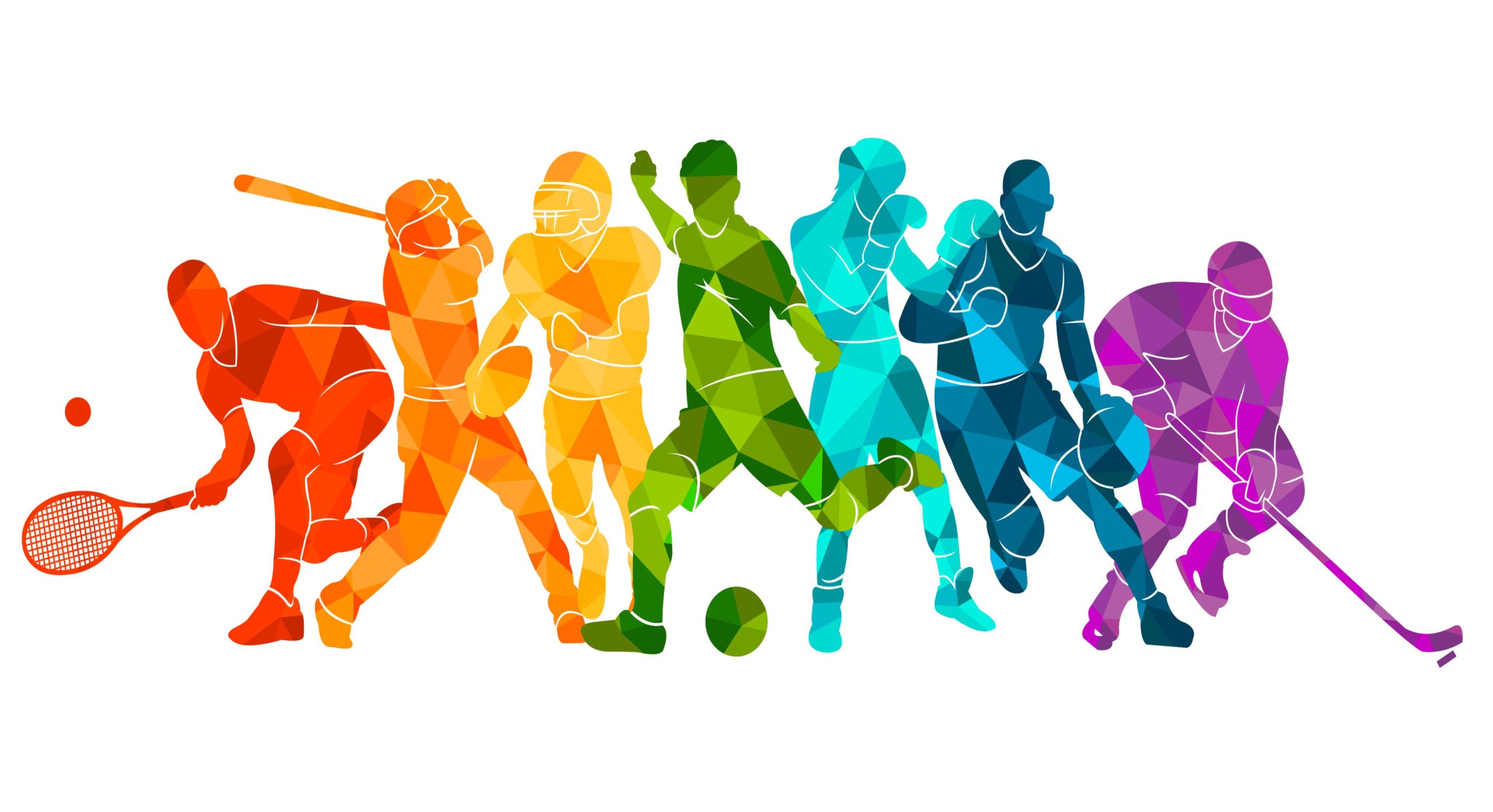Want a heads up when a new story drops? Subscribe here.
Are you wondering how some athletes go big while others, despite their best efforts, never make it to the top row? Fortunately for you, we’ve got the answer for this one, and as always, it gravitates towards the art of building your own personal branding. We’ve prepared an extensive athlete branding guide, so read on to learn how to get ahead of your competition.

Personal branding does wonders for athletes worldwide by helping them stay relevant and popular among their target audiences. However, how many athletes have you heard talking openly about how building their brand changed their sports journey for the better? Yeah, we thought so too.
The key to building a successful athlete branding is strongly correlated to being a good marketer. And we have a lot to spill out on the subject.
So without further ado, let’s get started.
Table of Contents
What is Athlete Branding and How Does it Work?
First thing first – what is athlete branding? Athlete branding is somehow similar to creating personal branding for any business. There’s something that differentiates the two, so let us clear that out. In general, branding revolves around a business or service. However, with athlete branding, the star of the show is the sportsperson themselves.
In the scenario of successful athlete branding, the sportsman has managed to establish a symbolic meaning using their name or face and turning it into a unique persona. Once the branding is recognizable by the mass public, the athlete can launch other types of brand marketing elements.

Brands do not happen overnight. Athletes don’t wake up one morning thinking they’ve just established a brand. On the contrary, brands take time and effort to build. However, those assets would be 100% worthless if you don’t have a plan built on a strategic foundation.
Building your digital marketing strategy is the crucial aspect that will make or break your brand. To create solid athlete branding, you must always be thinking about what makes you unique and different compared from the other athletes out there.
How can Branding Help Athletes, and Why Do They Need it?
Athlete branding is a competitive field with many young athletes striving to become great inspirational leaders. And the reason that it’s so competitive is that it provides a terrific opportunity for athletes to add to their income.
Game contracts make professional athletes enough money to support themselves, but to elevate their lifestyles to more glamorous levels, most of them rely on their personal brandings. And that is not surprising at all. Athletes with established brands can benefit from various endorsement deals and paid partnerships.
Once you’ve built a unique brand, it will be considerably easier for other businesses to align their values with your own.

Athlete branding can help sportspeople stay relevant on the market long after they’ve retired. Sports careers are almost always limited to a certain age. The reason? It won’t take long until another younger skilled athlete comes and takes your place.
But can said athlete steal all those endorsements and sponsorships right under your nose? If you’ve played your cards well and have managed to establish a resilient brand, you wouldn’t have to worry about that, as you will continue to be relevant.
If you put monetary endorsements and sponsorships aside, the top reason to work on cultivating your own athlete branding is the influence you can have on others. People scrutinize everything athletes do.
So even if being a role model is not a top priority on your list, it’s time to accept that as long as you continue to be a public figure, people will look up to you and your actions. Use your athlete branding to tell your story and motivate others while doing so.
Efficient Ways to Endorse your Athlete Branding
When it comes to athlete branding, it’s important to be persistent with what you do and be your most authentic self. While an athlete gets lots of coverage on television, they also need to rule the Internet like a boss. After all, the viewers for both channels consist of different target groups.
Things, however, get a little more complicated than that. The Internet is a vast place. So it’s not really a surprise that different age groups spend their free time on various websites and social media platforms. That means that you, as an athlete, must be cautious of the messages you are trying to convey while also being consistent with your content. Tricky, right?

With all that in mind, let’s look at some ways to endorse your athlete branding.
Podcast
While podcasting has been around for nearly two decades, it is now considered the thing of the future. And statistics prove it. According to The Infinite Dial 2021 from Edison Research and Triton Digital, there were nearly 162 million active podcast listeners in the U.S. in 2021.
Furthermore, statistics from the same survey show that podcasts are becoming more and more popular among different age groups. In the past, listeners were mainly from the 12-34 age group, while in 2021, 21% of all U.S. podcast listeners were over the age of 55.
To give you the bigger picture, let us tell you that according to Insider Intelligence, there are expected to be 424.2 million podcast listeners worldwide in 2022. And that is an impressive amount of people you can reach.

Take Joe Rogan, for example, and his podcast ‘The Joe Rogan Experience.’ Estimations show that every episode of the former MMA fighter generally draws in 11 million listeners.
It doesn’t matter if you are just starting your sports career or are already on your way to becoming a pro, as podcasting is one of the best ways to endorse your very own personal branding. And the vast and diverse audience you can reach is just one of the many reasons you should go into podcasting.
Think of podcasts as a way to entertain the listeners while sharing your truth, values, and point of view. Don’t worry if you haven’t launched your podcast yet. Use your valuable connections to be a guest star on other sports-related podcasts.
Blog
In an era where entertainment is always a click away, and people tend to have a short attention span, some may think blogging is outdated. Well, they couldn’t be more wrong.
Blogging is a unique way to drive traffic to websites. And every athlete should have a website (the more you read, the more you will understand why) with an active blog section.
The truth is, blogging is not always about readers and their short attention spans. It’s more about driving long-term results and helping with link building. Yes, the content should be relevant and gravitate towards topics your target audience would like, but blogging is more than that.

And the best thing is that maintaining a high-quality and engaging blog section is easy as long as you have essential blogging tricks up your sleeve.
Treat your fans and readers with respect and provide them with an engaging story that can help them better understand your personality. Think carefully about your followers and give them content that they won’t be able to find easily elsewhere.
Blog posts are all about producing evergreen content that readers can get back to regardless of how much time has passed, and that’s why they are still relevant today.
Some content ideas you may try for your brand website’s blog sections are:
- Detailed descriptions of the rules and/or regulations in your specific sport;
- Success stories of inspiring people that have achieved great things in your sport;
- Tips on how to get better at your sport;
- Ideas on exercises that are beneficial for improving stamina endurance.
YouTube Channel
YouTube is here to stay. Ever since it was launched back in 2005, YouTube has been an endless source of entertainment for people globally. The video format has always been the easiest way to attract users’ attention, which is why other platforms like Instagram and Facebook have changed their overall concept and direction.
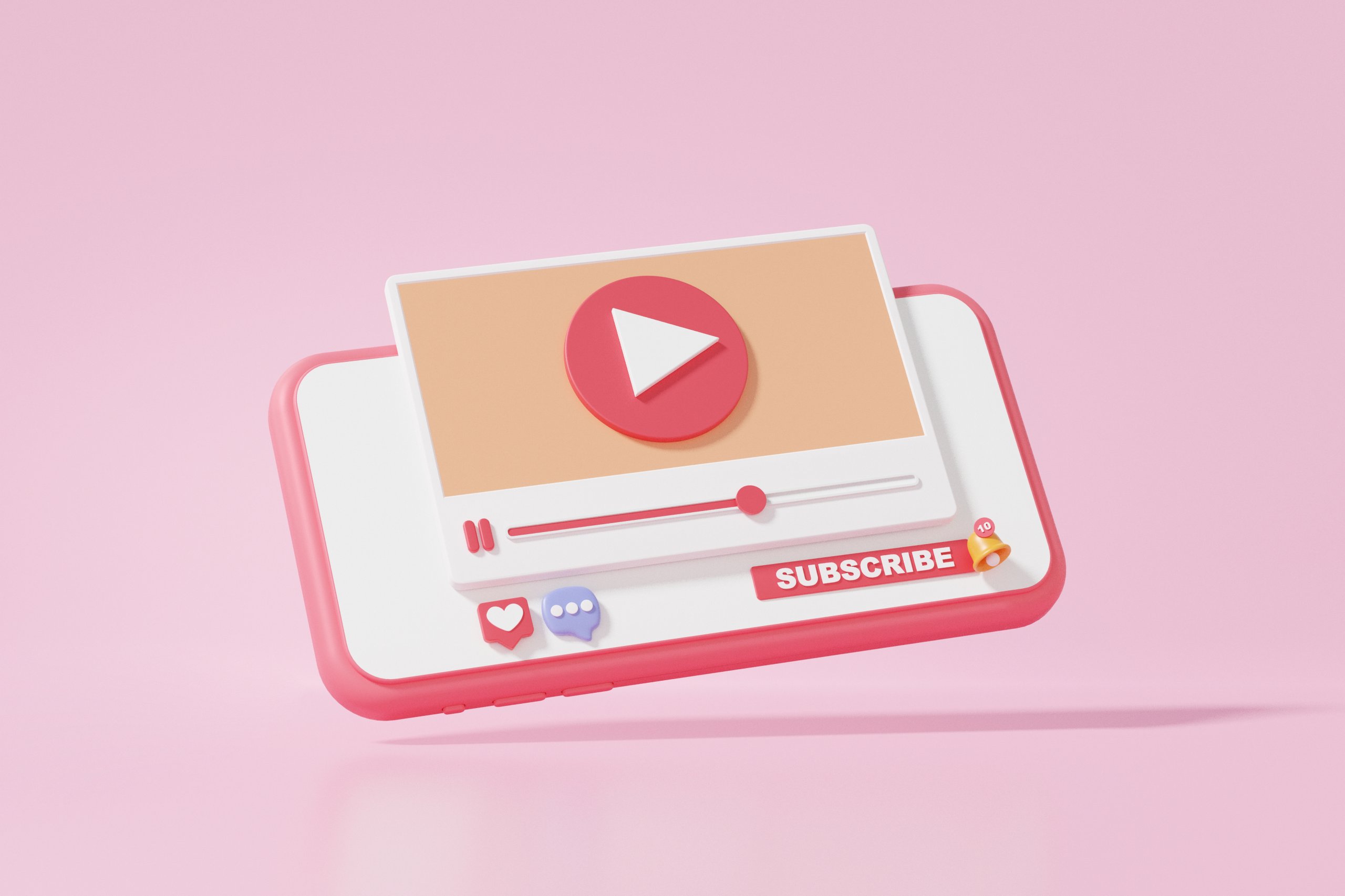
YouTube gives athletes the perfect opportunity to grow their fan bases. Athletes live an extraordinary life, and inviting fans to get a glimpse of that can ultimately make you stand out from your competitors.
Emotions, expressions, reactions to the simple joys of life – people like to see who their idols are behind the curtains of the curated life on Instagram.
All that explains why the day-in-my-life type of videos are so popular and a must for every YouTuber. Documenting your day is a great opportunity to inspire other young athletes to pursue a career in sports while introducing fans to your training routine and showing your progress.
Tip: Authenticity is key, so don’t post anything that doesn’t correspond with your real personality and mindset. And that is a tip you can use for anything you post on the Internet, not just on your YouTube channel.
Here is one more reason that highlights the importance of a YouTube channel – back in 2021, YouTube launched a new destination for sports fans where they can find different sports content in one place, including that of athletes, sharing relevant and valuable videos.
Social Media Posts

Nowadays, there are no personal brands without active social media accounts. After all, that’s where people spend most of their leisure time. Therefore maintaining a good online presence is key.
Posting regularly on your preferred social media account can help you build trust and genuine connections with your followers. With social media, trends can change in an instant, so it takes resilience and consistency to always be on top.
Experiment with your content and look at how the audience responds to it. Try out different content types and formats to figure out what works best for you and implement it into your marketing strategy.
Think smart and not hard may sound like a cliche, but in this situation, it is 100% applicable. Reuse your content in the best way possible. One of the perks of podcasting and having an active YouTube channel is the ability to use certain bits and pieces of content for other social media platforms.
Collaborations with Sports Brands
Sports marketing is a niche of its own. Cultivating a sports brand is as complicated as building an athlete’s personal brand. One of the ways sports brands diversify their content is through collaborations with famous athletes.

As an athlete, you get the opportunity to stand behind the brands that you believe in. Once you’ve gathered enough followers and have become a pro in what you do, different sports brands may reach out to form a partnership with you.
You will be able to work with the brands’ marketing teams to produce unique content and tell inspirational stories in your own voice. That’s a two-way endorsement – both for you and the sports brand.
Be selective about who you partner with – don’t settle with brands whose values don’t correspond with your own. To maintain your authenticity, only collaborate with brands and people you are proud to represent.
Tip: Hundreds of growing businesses use Socialfix to leverage successful athlete branding & marketing strategies and showcase their products and services. Try us for a free consultation
5 Mistakes to Avoid when Building an Athlete Branding
When it comes to athlete branding, there are Dos – and there are Don’ts. Before we go any further with our branding tips, let’s look at some mistakes you’d better avoid on the way.

1. No vision = No purpose
It’s fundamental for a brand to have a purpose. But how can you find your brand’s purpose without having a clear vision first? Brands that neither have vision nor purpose tend to have short-term success.
Making more money may sound like a good enough purpose to you, but to your followers, it sure doesn’t. So think of anything you want to achieve, aside from money, and cultivate your brand around that.
Building a valuable connection with your audience is crucial for the success of your athlete brand. But you can only do that once you know why people follow you and how they can benefit from that.
So how do you define your athlete’s brand purpose? For starters, take some time and write down the answers to those questions:
- Why did I decide to do what I currently do?
- What do I want to leave for the world?
- What am I bringing to the table?
- Who can I help with my knowledge?
- How can I help my followers make a change?
2. Buying Followers

We get it that having a large number of followers is tempting. Some athletes go further in their desire to gain a larger audience – they start buying fake followers.
However, that is a huge mistake that will cost you more than you might have initially thought. Even if you are starting with a small number of followers, don’t give in to the temptation to buy bots and fake accounts.
Focus on naturally building a loyal audience that’s intrigued by your content and will support you no matter what. People follow athletes that give value and inspire them to be better and achieve more. As long as you build your brand around that, your follower stats will skyrocket to the moon.
3. Posting Hard or Hardly Posting
We admit it, that is a tricky one. Yes, consistency is key, but how do you measure how often you should post? Don’t spam your audience with too much content at once. Instead of keeping your target audience engaged, it’s more likely to annoy it.
Give the people enough time to digest the content before throwing another post or story at them.
Furthermore, too much posting may get you in trouble. Ever heard of shadowbanning? That is social media platforms’ way of restricting users’ visibility without notifying them in the first place.

As you can probably guess, this can seriously damage the growth of your personal brand as other users won’t be able to find you as effortlessly as they once did when they type in your name in the search engine.
While the reasons for a shadowban are more often than not related to a violation of the terms and conditions, posting too much promotional or spammy content may get you under the radar.
Some post too hard, but others hardly post anything at all. And this is a problem too. With so much entertainment on social media, even the most loyal fans will forget about you if you don’t post anything for a couple of days, let alone weeks.
Showcasing your merch or just telling your story with your followers is significant to stay relevant and popular with your followers.
When it comes to posting on social media, the best you can do is find the balance to be consistent in posting without being too spammy. But how to do that? Track your analytics to see what the best time of the day to post content is and experiment with how other users will engage with said content.
4. Not Following Style Guidelines
Consistency is not just about posting the right amount of content in the right hours. When we say to be consistent, we mean it in every possible way to the smallest detail. If you don’t have a style guideline, we advise you to create one soon. If you already have one that you don’t use, you’d better start following it immediately.

Every brand should have a style guideline that contains information on what design elements comprise its identity. Whether you are working with a designer or handling this all by yourself, style guidelines can help you send the right message to the audience.
And don’t even get us started on how handy it is to have all the information about your brand in one place.
What Elements Should You Include in Your Style Guidelines?
- Logo.
Whether for your website or just for your social media accounts, your logo will always be your signature, so make sure it’s a good one. Include information for size & proportions, space, colors, etc.
- Typography.
Be consistent in the fonts you use for your stories and website. Fonts can give a certain vibe, so use them to your advantage to tell your story to the audience. Pick ones that correspond with your brand mission and personality.
- Color palettes.
Pick a group of colors that go well together and will make both your website and Instagram grid layout so recognizable that your followers will associate them with you.
- Social media assets.
That may include tools that make your job easier, presets for your photos, grid layouts for your Instagram account, etc.
- Brand voice.
Even if you don’t have a blog, following a tone of voice for your athlete brand is a must. Write down some trademark words that will be recognizable to your audience and some that you will never use.
- Mood boards.
To best illustrate the message you want to convey with your athlete branding, collect a couple of images that will serve as an inspiration.
5. Not Responding Fast Enough
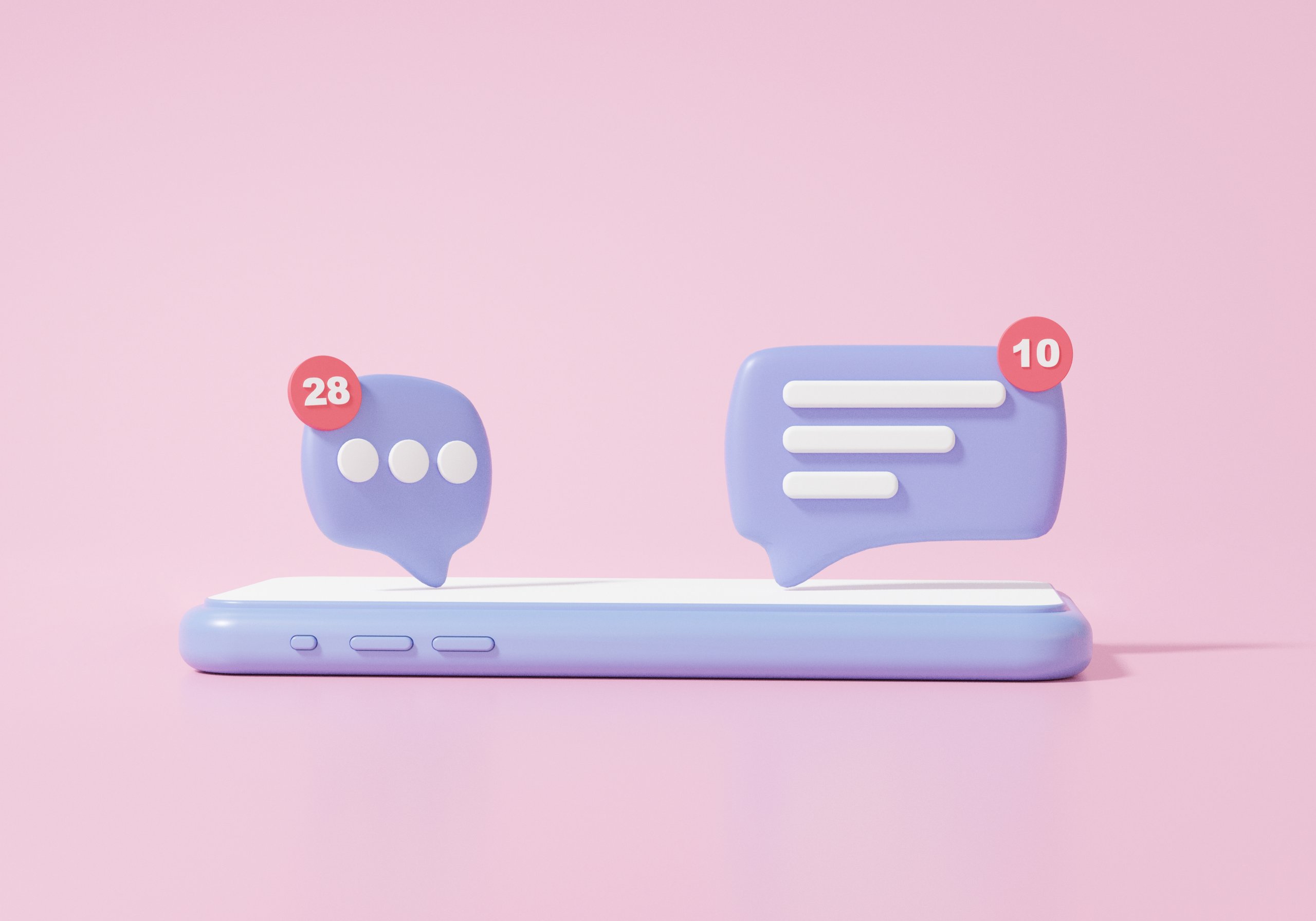
Another mistake athletes make while building their brands is not responding fast enough to messages from their followers. If your fans feel ignored from the beginning, how do you expect them to stick with you?
As your followers grow, you will receive more and more questions from users interested in your persona. How you treat those people and how long it takes you to reach out to them in return may make or break your athlete brand.
According to a survey conducted by Social Sprout in 2020, roughly 79% of online users expect a response from brands within 24 hours or less. And while this data is relatively old, users’ expectations haven’t changed much in the time that has passed.
Take some of your time every day to reply to your audience’s questions and requests. Some may ask you about yourself, while others may seek sports tips and pieces of advice.
If you have published content that may answer their questions, send it forward to them. If not – type in a short answer and take a mental note to update your content strategy. Such messages give you insights into what your audience would like to see more from you.
Word of mouth marketing does wonders, so make sure you always reply on time to leave a good impression. Don’t take your followers for granted, and always be kind and respectful in your replies, even if you’ve had an exhausting day.
What Can You Do to Speed Up Your Response Time?
Here is a valuable tip you can try: Observe your messages and look at the questions people are most interested in.
Write down an answer for each of them and save your templates somewhere you can easily access them the next time people ask you the same things.
Once your followers go way up and you no longer have the time to reply, it’s time to hire someone to keep your messages clean and organized.
Athlete Branding and Marketing: Here’s What you Should Know

Are branding and marketing two sides of the same coin? Before we jump to any conclusions, let’s look at how we define each term.
According to the definition, marketing is the set of processes, strategies, tools, and practices one uses to promote a business, service, product, or company. It makes it possible for small businesses or big enterprises to reach potential customers and persuade them to purchase a product, service, etc.
On the flip side, branding is all about defining a company or a person’s values, missions, purposes, and everything that makes them exceptional. By gaining customers’ trust, branding helps businesses retain customers for years after their first interaction with a product or service.
Each term has its specific nuances. So no, people shouldn’t use branding and marketing interchangeably as they neither have the same meaning nor represent the same thing. However, can we have a brand without the help of marketing? No, we certainly can’t. Let’s dive further into the reason why.
In today’s world, marketing and branding are highly correlated. Athletes need marketing to catch fans’ attention, but personal branding is what can transform it into loyalty. With that being said, it’s high time we discussed how athletes could use the different types of marketing to cultivate their brands.
Athlete Branding and Social Media Marketing

Social media marketing is a force to be reckoned with. As we’ve already mentioned, it can make or break a brand. So let’s see in more detail why and how you can use its power to benefit your athlete branding.
Why Do You Need Social Media Marketing?
Having a solid presence in the social media world allows you to build new connections with other people regardless of their niche. It also boosts your credibility and helps you earn your followers’ trust.
Furthermore, different social media channels give you various opportunities to take a stand and express your values and beliefs to connect with people from various age groups and target audiences.
Stay tuned as we will discuss which platforms work best for athletes and how to use them to your advantage.
An Example of the Influence of Athletes on Social Media
Are you still not convinced of the immense power social media holds? We are more than happy to provide you with an example of the perks of social media. Back in July 2021, the NBA pro athlete Giannis Antetokounmpo ordered (exactly) 50 Chick-fil-A minis (chicken nugget sandwiches) to celebrate the 50 points he scored in Game 6 for the championship. Why does it matter, you may ask?
He did it on Instagram Live. And things quickly escalated to a degree where the 36.3M impressions gathered from shares on different platforms earned the fast-food chain $294,8K in brand value. The athlete doesn’t have an endorsement deal with Chick-fil-A, but afterward, he jokingly requested a free supply for life on Twitter.


The Challenges of Athlete Branding and Social Media Marketing and How to Overcome Them
Everyone wants to enjoy the perks of social media, so how do you stay on top when there’s such fierce competition? Even if you are your most authentic self, have the brightest personality, or have designed a content strategy like no other, you might still experience difficulties with your social media account.
The key to overcoming those challenges is to stay consistent no matter what. Remember how we mentioned that successful branding is not an overnight success (in most cases, at least)?
Repeat it like a mantra. There are good days where you will reach hundreds of people and others where it will be tough to look at the low engagement rates.
Sometimes social media algorithms work in mysterious ways. So it’s best to follow the official accounts of the platforms to stay informed of whatever changes and updates they might have made.
Another universal tip when cooking up your content strategy is to include all available formats for the specific platform.
While we will discuss the pros and cons of every social media channel in a bit, bear in mind that the video format is gaining more and more popularity, so don’t be afraid to use it on your platforms.
Athlete Branding and Influencer Marketing

If a decade or more ago an influencer was someone who lived their life in the spotlight or else said a celebrity, nowadays, the tables have turned, and almost anyone can become an influencer.
Thanks to social media, we were all able to witness the rise of influencer marketing. In its entirety, influencer marketing comprises individuals who have gathered a large following on social media and supposedly have expertise in their niche.
Those individuals, whom we usually refer to as influencers, receive endorsements in the form of beauty products, clothing, free services, etc.
They later post their reviews and opinions regarding their experience with the products and services on their social media account. All of that inevitably has a positive (in most cases) contribution to the brands’ revenue growth.
Are Athlete Branding and Influence Marketing the Same?
Once they gather a certain level of fame and popularity, athletes become influencers. It is fair to say that is only the natural development of the athlete branding cycle.
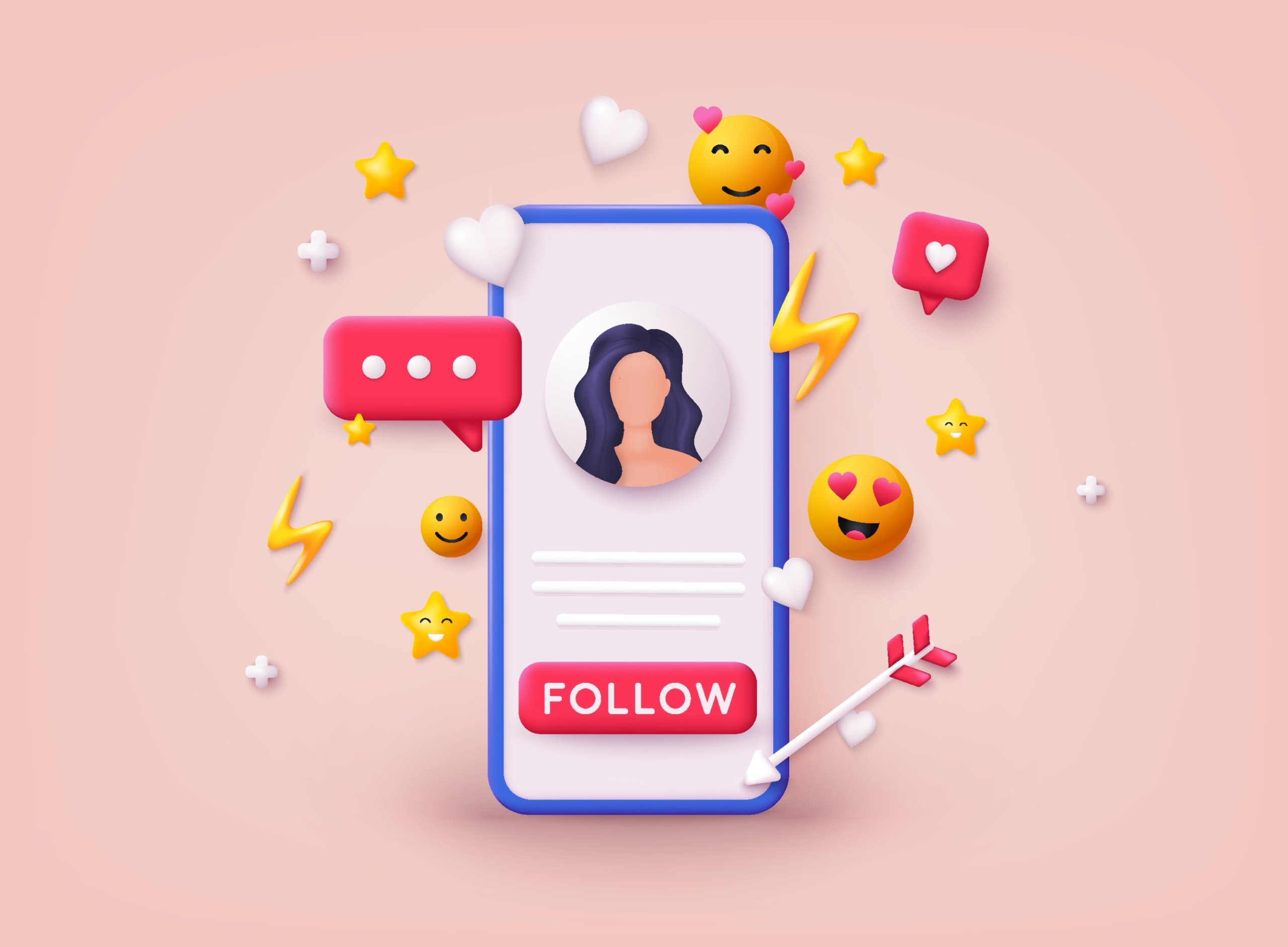
Whether big or small, retired or just getting started, athletes are sources of inspiration. That essentially makes them the perfect candidates for the influencer role.
In the sports niche, athlete influencers usually receive endorsement deals from various big brands on the market. Not only do athletes promote a healthier lifestyle on their social media, but also the means to achieve it.
Therefore you will often see sponsored posts or stories for sports clothing, healthy cooking, and anything else that can inspire people to ditch the lazy lifestyle and go for the more active, healthy one.
The Good Example: How Do Athletes Influence People?
We might be just getting out of a pandemic, but let’s bring you back to when it all started. In early 2020 we were only beginning to hear more and more about the deadly virus. Reminders of the importance of social distancing were everywhere around us.
Nike grabbed the wave and decided to send a powerful message to sports fans and enthusiasts worldwide. They used their professional athlete ambassadors to encourage people to stay at home.
Stars like Cristiano Ronaldo, Tiger Woods, Maria Sharapova, Michael Jordan, and Carli Lloyd used their popularity to spread the message and emphasize the immense need for social distancing.
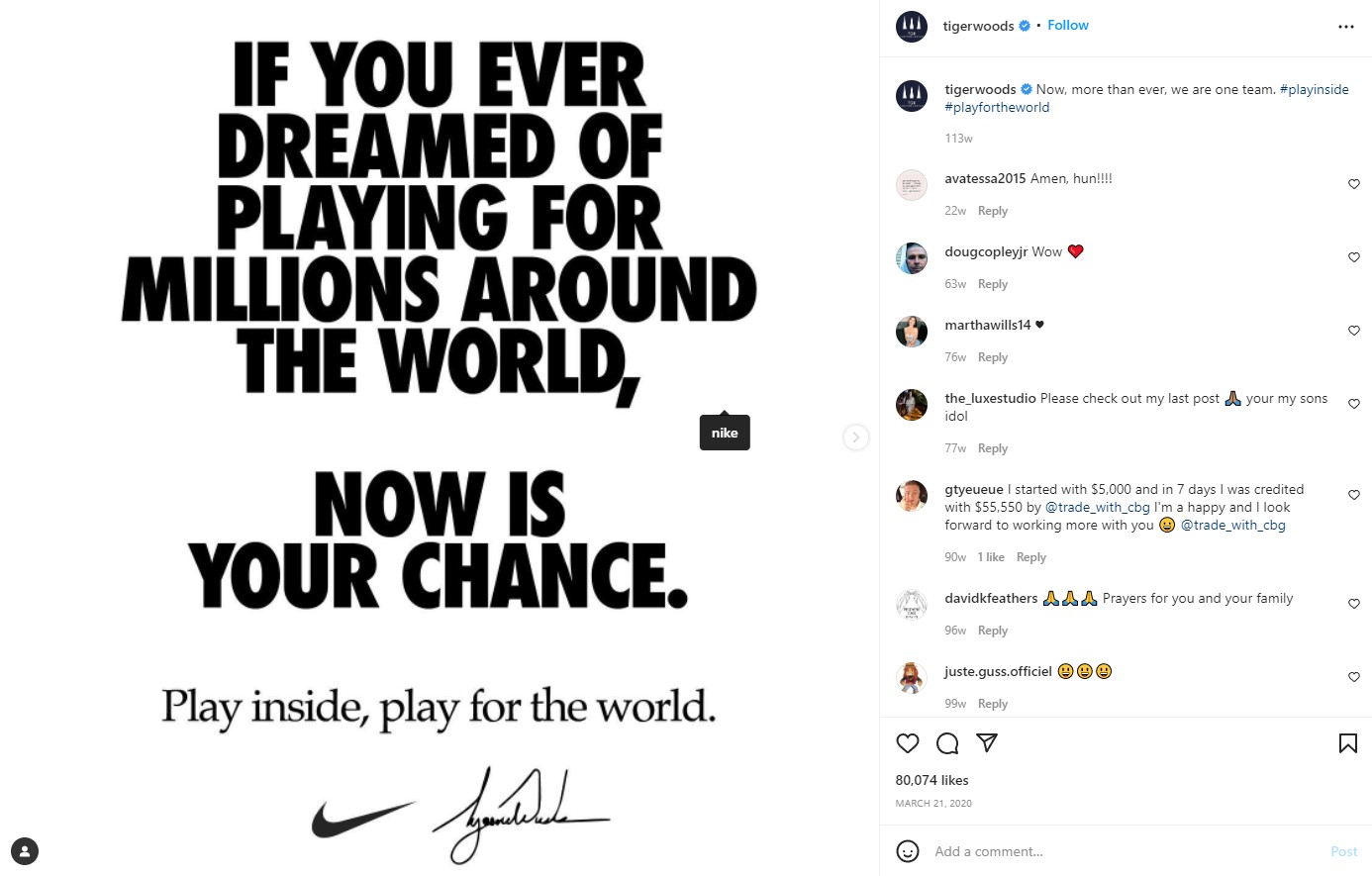
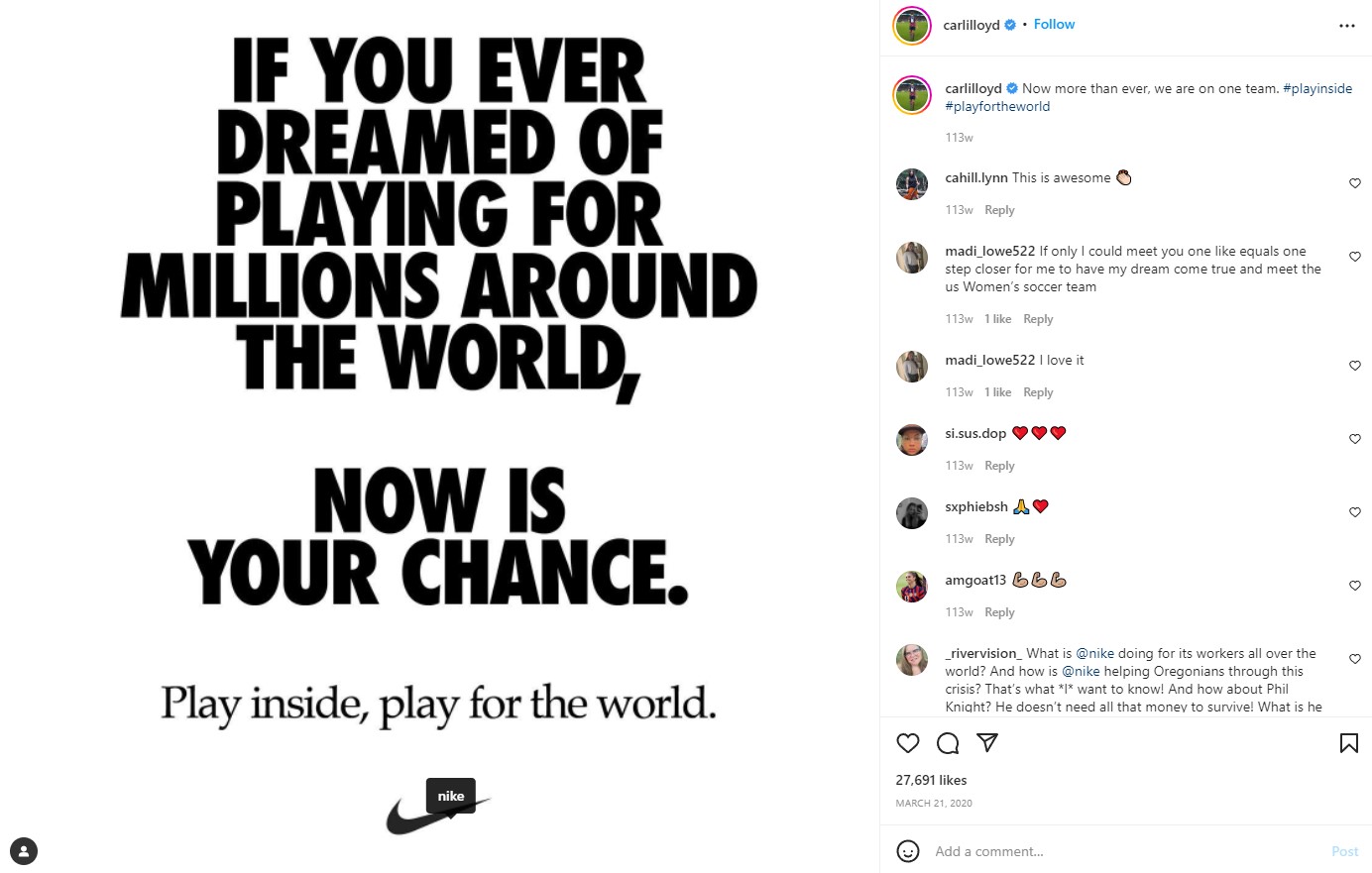
Tiger Woods | Carli Lloyd
Soon after, Nike had another partnership with Cristiano Ronaldo, where he posted a video announcing the Living Room Cup, where he challenged fans to work out at home. That video currently has over 43 million views.
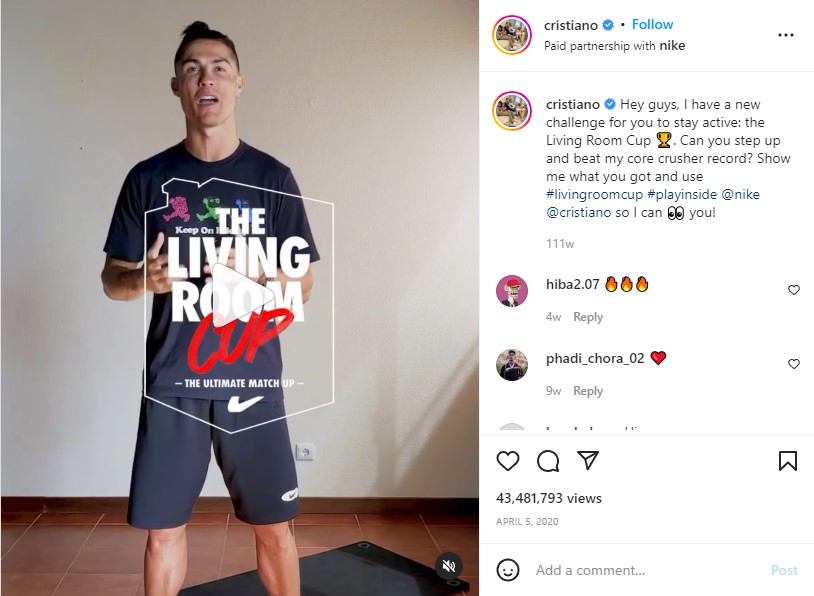
Cristiano Ronaldo
The sports brand took matters even further and made its Nike Training Club app free and available to all users. Thanks to their excellent marketing efforts and even more to the immense help of their pro athletes, Nike managed to stay relevant and grow despite having to close most of its retail stores during the beginning of the Covid-19 pandemic.
The Challenges of Athletes Becoming Influencers and How to Overcome Them

People who have just started growing their athlete brands need to be cautious of the persona they are creating. Depending on the point of view, it may be a blessing and a curse, but whatever you post online stays there forever.
Put yourself in your audience’s shoes. Would you follow an athlete, regardless of how good they are, if they have a tarnished reputation on the Internet? We thought so.
Therefore, before you post anything on your social media, you should consider the different reactions, opinions, attitudes, etc., you will generate with your content.
Even the tiniest scandal can tarnish an athlete’s reputation and ruin their chances of being seen as a reliable and inspirational role model. And if people don’t look up to the athlete, that means brands will not want to collaborate with or endorse them.
To save them from the doom of their influencer careers, many sports organizations have adopted policies aiming to educate athletes on what works online, what doesn’t, and how to maintain a positive reputation in the vast world of social media.
Athlete Branding and SEO Marketing

SEO, the infamous abbreviation for Search Engine Optimization, is an area of digital marketing any self-respecting athlete should implement in their brand cultivation strategy.
The sole purpose of SEO is to help websites’ visibility and ultimately rank them higher on Google’s Search Engine Result Page (also known as SERP).
Having your website among the top results on the first page of the SERP means that every person who has typed in a set of words in the search bar will see and have access to your content.
Good rankings and perfect ranking metrics do not happen overnight. Getting a website on top requires time, patience, and skills. But is it worth it to spend your time and effort on SEO?
Do Athlete Brands Need SEO?
Every business needs a good website and an even better SEO strategy, and athletes’ branding websites make no exception.
Essentially websites are an integral part of the brand recognition process. Regardless of their niches, brands should never neglect organic traffic.
Instead, they should constantly be trying new SEO strategies to increase their visibility in the vast world of the Internet.
Having a website will make you appear more trustworthy in the eyes of your fans and brands that would like to collaborate with you.
Giving your website the TLC it deserves by trying out good SEO techniques will help you reach an even broader audience.
Tip: Hundreds of growing businesses use Socialfix to leverage successful athlete branding & marketing strategies and showcase their products and services. Try us for a free consultation
3 Essential Elements of a Good SEO Strategy to Help Your Athlete Branding

SEO consists of many sub-departments, any of which contributes to a better ranking.
Conduct Quality Keyword Research for Your Content
We already stressed the importance of blogging for endorsing athlete brandings. But before blog articles get published, you need to conduct keyword research to filter out the most appropriate options for your brand.
With that in mind, you can also use keywords for any other written content on your website – pages, metadata, including meta titles and descriptions, headers, and even image alt tags, etc.
Writing content is a time-consuming task, but it is one you don’t want to miss out on. If you are only beginning to cultivate your athlete branding, it’s a good idea to give writing your own content a try. Once you become a big enough sportsman and are too busy to create it yourself, delegate this task to someone else.
Make Your Website Easily Accessible from Different Devices
Being flexible with how people can see your website is crucial in today’s world. Offering both – a good desktop and mobile experience is a gamechanger for athlete brands.
As for which version – mobile or desktop – is preferred, here’s your answer. While you should ensure that both versions work properly, pay extra attention to your website’s mobile adaptation because most visitors use phones or tablets when searching the web.
Making sure you provide a pleasant, mobile-friendly experience for your visitors makes you stand out even more than other athletes.
Don’t Forget to Check Your Website’s Load Time
People are already used to getting what they desire the minute they search for it. So if your website is not fast enough to meet their needs, they most likely won’t stay to read what you have in store for them.
Optimize your brand’s website loading speed, and we guarantee you that you won’t regret it!
Athlete Branding and PPC Marketing

If you are not new to the digital marketing world, you’ve probably heard of PPC at least once. Pay-Per-Click is the marketing niche that helps businesses reach a broader audience and increase revenues.
While SEO helps you reach people organically, PPC “buys” you and brings to your website a new audience. Thanks to PPC, athletes can bring people to their websites, social media accounts, etc., and turn them into loyal fans later on.
How Does PPC Work for Athlete Branding?
There are different things to consider when it comes to advertising, the most important being what exactly are you trying to promote? Once you have a clear objective, you can build a reliable strategy to help you achieve your goals.
The main reasons athletes rely on PPC are to:
- Promote their brands;
- Generate new leads;
- Increase sales for their products.
PPC specialists use a variety of platforms when building their strategies. Let us introduce you to the main ones:
Google Ads
Promoting yourself on Google is a must. After all, Google is the Search Engine with the biggest global market share thus far – over 85%. Almost anyone who has a question or is just looking for information uses Google as their primary source.
Another reason people choose to advertise on Google is the variety of choices of CPC bidding strategies. Here are some examples of the most commonly used PPC bid options:
- Target ROAS;
- Target CPA;
- CPC – automated and manual cost per individual click;
- Enhanced CPC;
- CPM;
- Maximize clicks;
- Maximize conversions.
Google covers most online search queries globally, meaning using Google Ads for your promo content is your one-way ticket to getting to any demographic you need. Whether opting for a local audience or a broader, more global one, you will be able to reach it with Google Ads.
Unfortunately, there are downsides as well. Considering the high volume of reach you can get, it is only natural that the competition will be fierce. One needs to step up their PPC strategy to get good results on Google Ads.
And just because the platform is so popular, using it for advertising may cost you a lot of finances. The prices for niched industry keywords may get ridiculously high, so brace yourself before you jump in on using Google Ads.
Facebook Ads
Back to social media again. Advertising on social media is equally important as doing it on Google. With Meta owning the most popular social media platforms, it is no surprise that the giant also offers a good alternative for advertising.
Facebook advertising differs from Google. While Google’s is based on search, Facebook’s is based on interests, location data, and demographics.
Placing an ad on Facebook ads means that it will be visible on
- Facebook;
- Messenger;
- Instagram;
- All apps and websites that have partnered up with Facebook.
Reaching greater audiences is Facebook ads’ main benefit. Considering it is not activated by search, Facebook advertising is inclined to help you attract big, small, local, or global audiences – whatever suits your needs.
Twitter Ads
Despite Facebook’s and Instagram’s growing popularity and market share, Twitter continues to be a relevant social media platform.
And as such, it has its PPC ad network. One that turns out to be effective and reliable.
Ways to promote your athlete brand on Twitter:
- Sponsored hashtags;
- Feed posts;
- Sponsored accounts;
- Twitter moments.
The best thing about Twitter PPC is how cheaper it is than Facebook or Google. And while the reach is a bit smaller than the other two giants, it is still impressive. The CTR for Twitter is between 1-3%, and you can get to active communities and plenty of countries.
Athlete Branding and PPC – Do You Need It?
But do you need any type of PPC when developing your athlete brand? Well, it depends. You won’t see any big names spending their dollars to reach more people. They’ve already gathered quite a big following that does the job for them.
On the other hand, novice athletes rely on PPC strategies to drive people to their accounts. Being a beginner is a tough challenge, but understanding PPC and applying it to the best of your abilities can alleviate some of the burdens on the way.
Athlete Branding and Design Creative Marketing

SEO is an essential factor for athletes’ websites but is not the only one. The design of your athlete website is equally important.
Providing an aesthetic and entertaining visual experience to your audience is a crucial aspect that you’d better not overlook.
Why Should You Care About Your Website’s Design?
Do you know that annoying feeling you get when visiting a website with neither a user-friendly interface nor a pleasant design? Yeah, we do too. And we also get the urge to leave it immediately.
The first impression people form when they land on a website is quite impactful and can determine their whole relationship with the brand.
Your audience’s perception of your website will make or break your athlete brand. A good website design retains visitors and helps them learn more about you, your vision, and everything you represent.
If your website doesn’t meet today’s design requirements and is not compelling enough, your leads will go elsewhere – to your competitors. And we are sure you don’t want that, especially if they have put the effort into launching incredibly designed websites.
We will never get tired of stressing the importance of consistency. Following your established style guidelines or your brand’s trademark elements can help you or your designers create an outstanding website design for your athlete branding.
The Good Examples – Athletes With Outstanding Websites to Inspire You
Tony Hawk
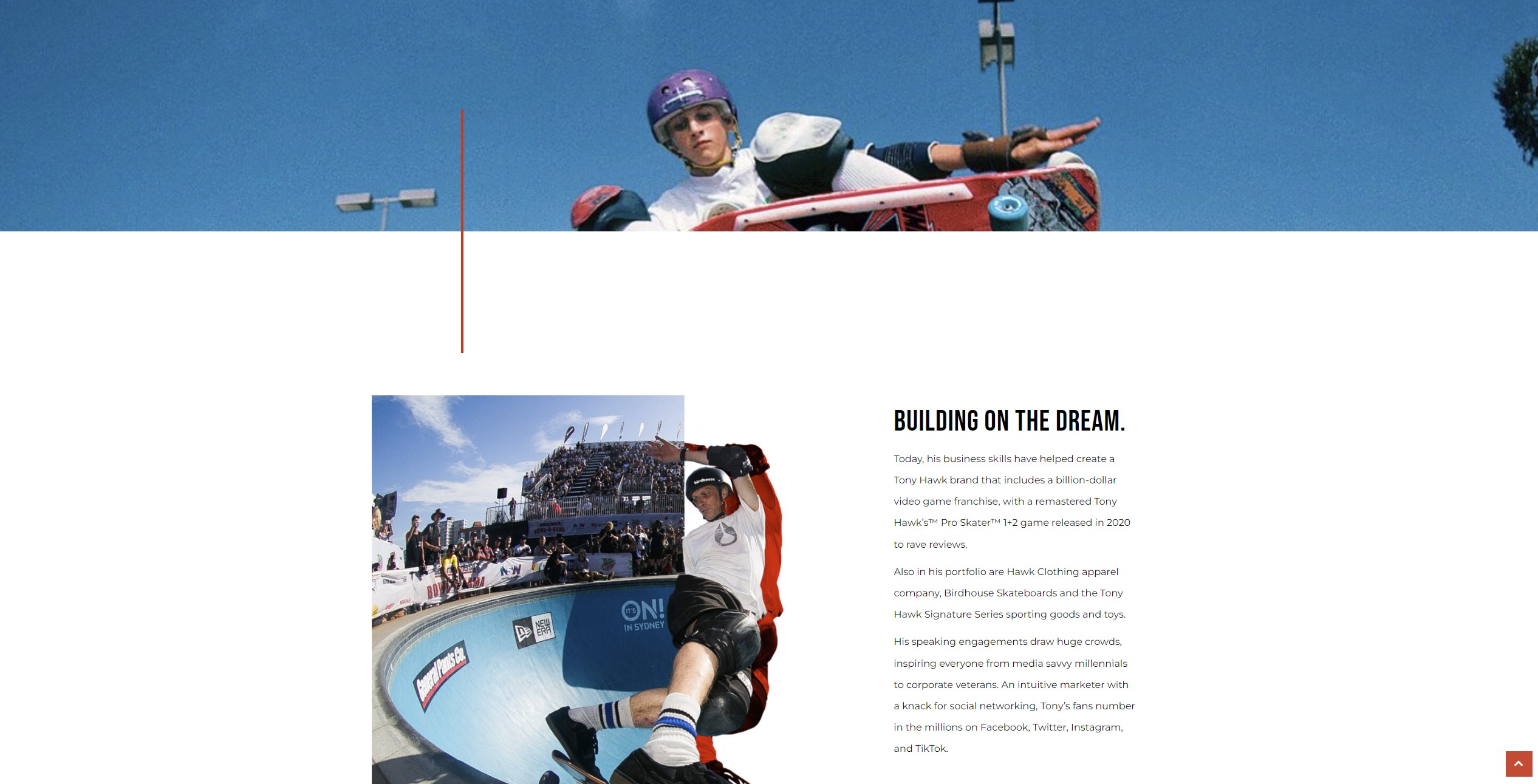
The master of the art of skateboarding, Tony Hawk, has one of the best athlete websites we’ve been lucky enough to see.
The website promises an impeccable experience for everyone scrolling through its pages. The design is everything you would expect from a skateboarder – trendy graphics, catchy motions and transitions, and elements from the street culture to elevate the experience even further.
Although the 90s star is no longer actively competing, his website is constantly updated to provide relevant information about his current endeavors and brand products.
Usain Bolt
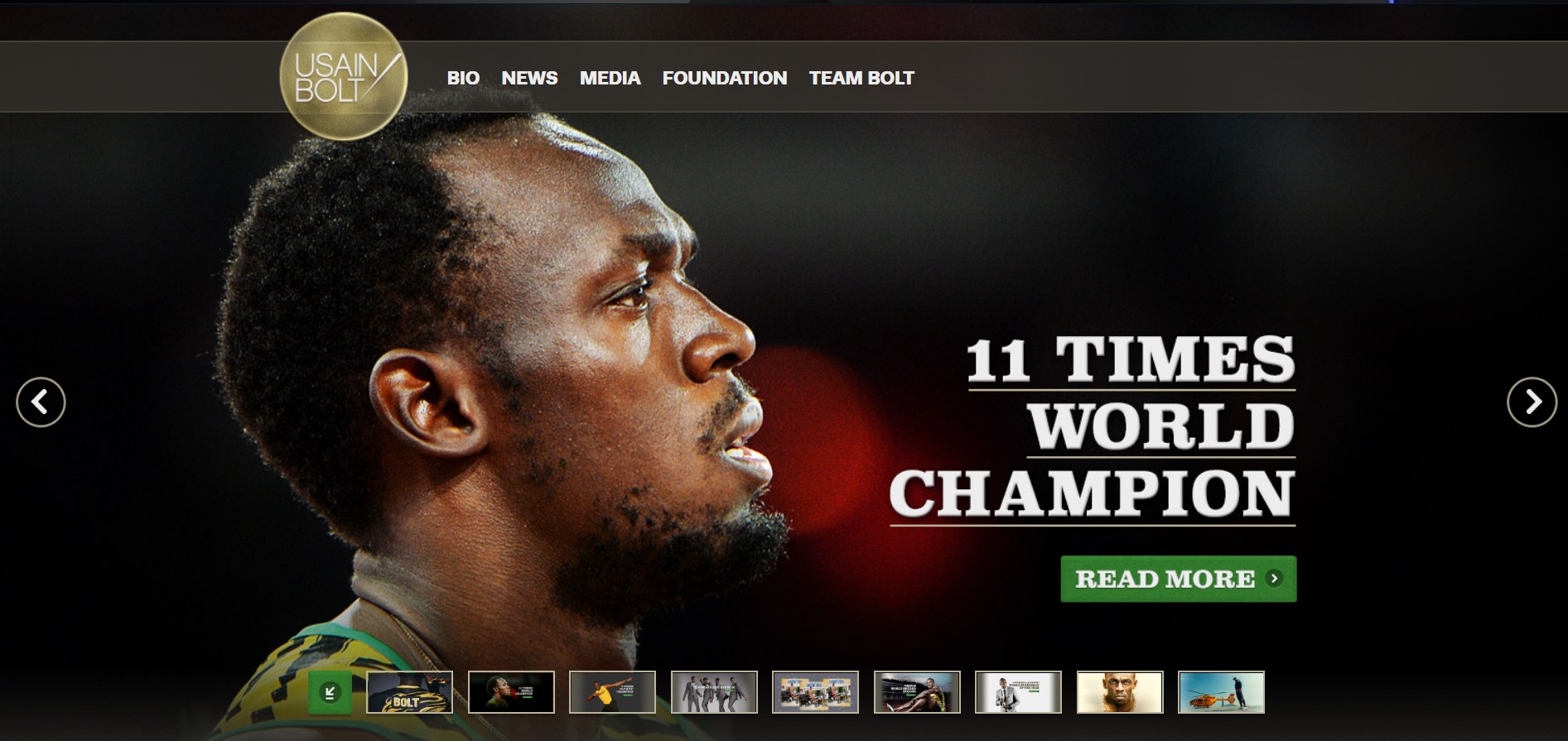
Not only is Usain Bolt the fastest man in the world, but he is also an icon in the digital era.
The athlete has one of the most recognizable athlete websites out there. On the homepage, you can see a slideshow with pictures of Usain Bolt, where each photo represents a section of the website or an upcoming event.
If you think about it, the design is quite simple but, at the same time, provides everything his audience wants – his story, updates, current news, and photos of the sprint athlete.
Jessica Ennis-Hill
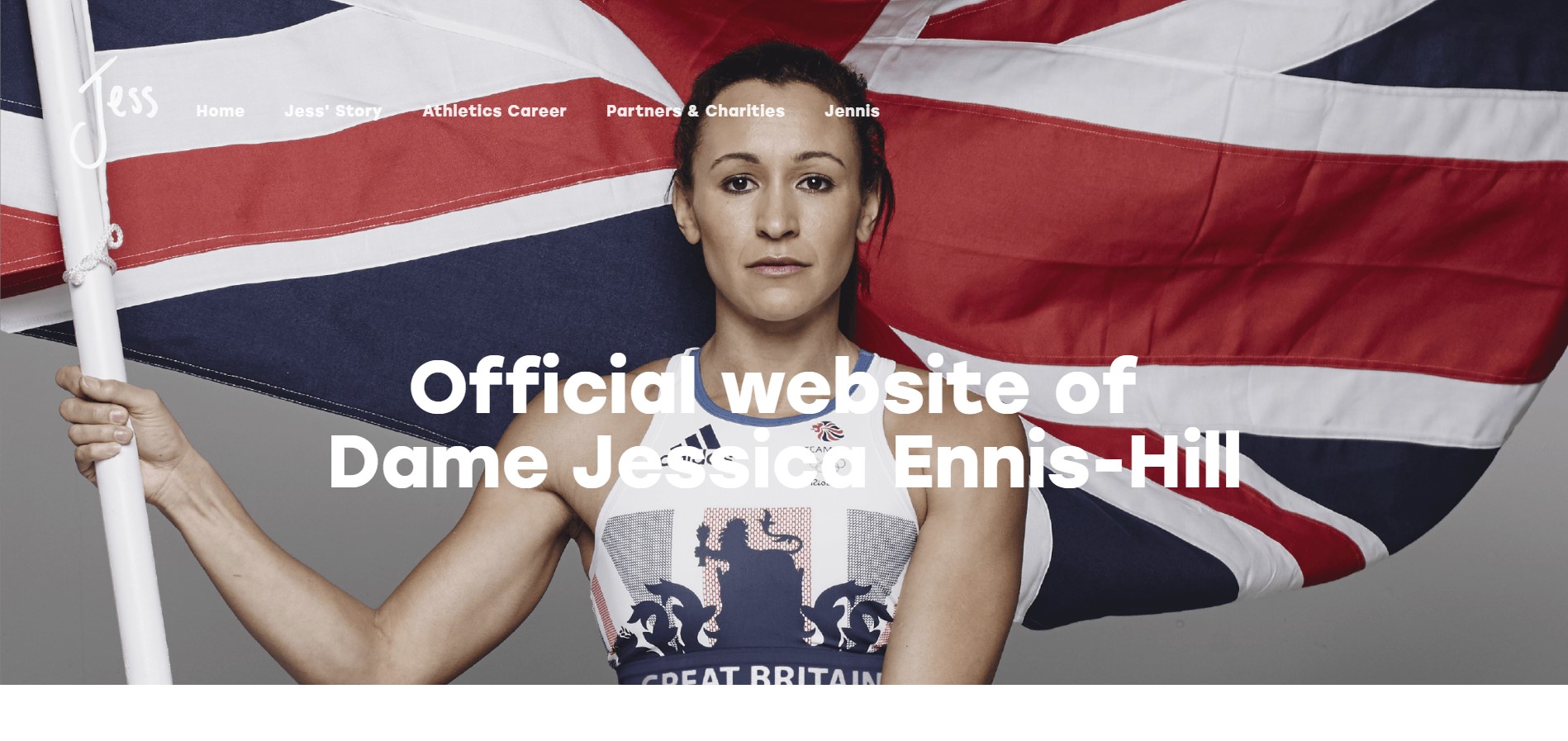
Usain Bolt is not the only athletic person with a website that makes you say “WOW!”. An Olympic heptathlon champion, Jessica Ennis-Hill, is blowing designers away with a flawless website. Her design team has opted to make the website navigation as easy as possible for every user.
She’s chosen visual storytelling as her primary weapon and has thus managed to evolve her brand image to its current level and position. She’s dedicated a whole page to her Jennis program, where she encourages people of all ages to live a healthier life and exercise daily.
Athlete Branding and Email Marketing

Email marketing is one of the pioneer techniques that rose at the beginning of the digital marketing era. While it serves different purposes, most commonly, people use email marketing to educate or inform people on the newest trends, products, services, or discounts around their business.
Marketing experts rely on email marketing to engage with the brand’s audience between purchases, releases of new products, etc.
Can Email Marketing Help Your Athlete Brand?
Some claim email marketing is an outdated method that no longer drives impressive results. Well, they are wrong.
Everyone who wants to spend time on the Internet has an email address. It’s a fact. It may be true that not everyone checks their emails daily, but most people are occasionally spending some of their time looking and replying to their emails.
Although often overlooked, email marketing can drive outstanding results for athletes at the beginning of their brand cultivation process.
With so much information available online, the fight to stay relevant and on top is getting fiercer by the minute. Email marketing is another tool that can elevate your audience’s experiences regarding your brand and help them form positive connotations with it.
Types of Emails to Send to Your Audience
While there are no limitations on the types of emails athletes can send out, some email formats are a definite must.
Welcome Emails
Yes, we know you’ve probably seen dozens of welcome emails whenever you sign up for a platform or book a service.
But there’s a reason for that. It shows appreciation. People’s time is valuable, and taking a moment to thank your audience for deciding to join you on your journey will make a good impression.
Luckily for you, there are now ways to optimize this process and set up templates to send whenever a new user registers on your website.
Monthly or Weekly Newsletters
Make sure you have newsletters that aim to remind your fans about all upcoming sports and life events that they might be interested in attending.
Everyone is busy working and living, so it’s absolutely natural to forget dates and information in general. Sending out reminder emails in advance will help your fans better organize their days to show up to the events they like.

Tips and Tricks Newsletters
A big part of your audience will consist of inspired young athletes. The other part will be so enthusiastic about your sport it will want to know all the tricks and techniques that make you such a good sportsman.
Don’t be afraid to show your people how you do things, what you do to get in shape and everything else that makes you excel at your sport.
Prepare thematic newsletters in which you can include links to YouTube videos, blog posts, social media posts, and everything else you think your audience will find valuable.
“What’s New” Emails
Many athletes have their clothing or equipment line. Those who do, need to work hard on their promotional content.
Not sending information regarding your products is a definite mistake many rookies make. Don’t be one of them.
If you already have an additional source of income and are offering brand products your audience might like, always make sure they are aware of their existence.
Whenever a new product, a sale, or permanent discount comes up, alert your fans by sending out a promotional email.
If your products are not official yet but are coming soon, include sending teaser emails to your launching strategy. You will be surprised how many people prefer emails over social media.
Athlete Branding and Social Media Platforms
Repeating it like a mantra made it clear that social media is an enormous part of an athlete’s brand strategy. Let’s look at a few examples illustrating how athletes use different social media platforms to cultivate their brands and grow higher revenues.
Athlete Branding on Instagram
If you ever have doubts about the immense power of Instagram, let us remind you that daily, users double tap 4.2 billion posts. People spend so much time on Instagram that it is the perfect place to grow your athlete branding. The more authentic (never fake or bots!) followers you have, the more endorsement deals you will get.
For instance, David Beckham is one of the athletes with the most sponsored posts on the app. But he is definitely not the only one.
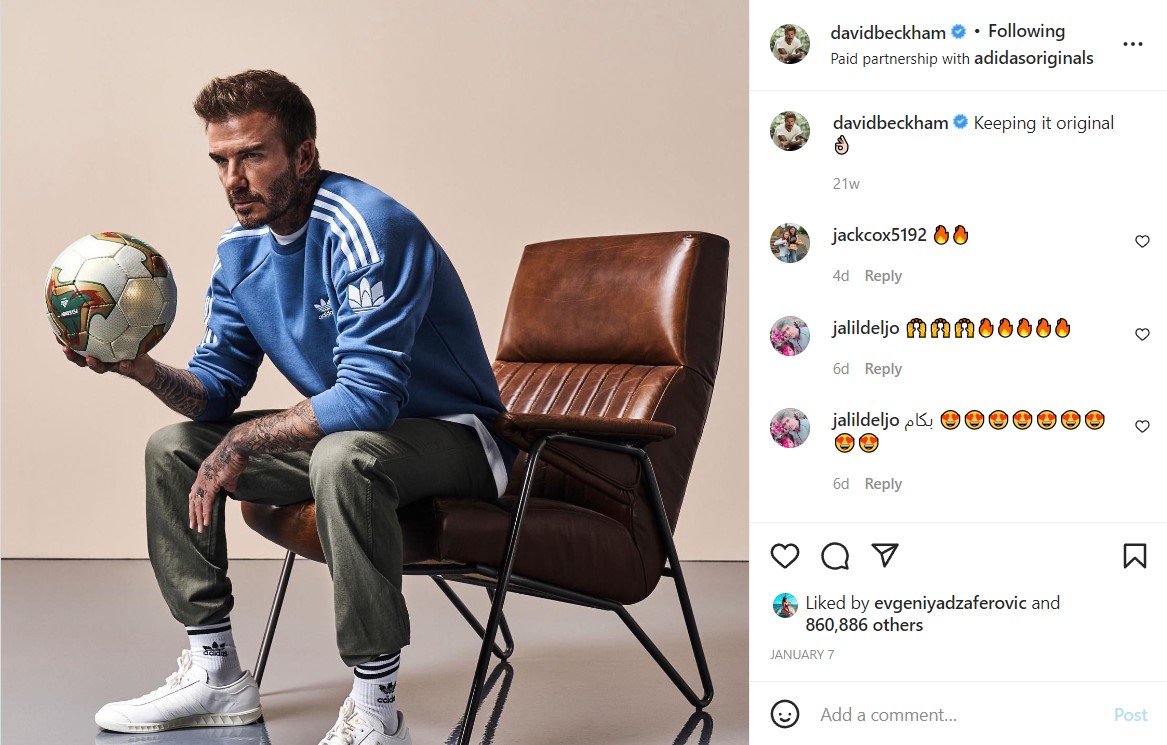
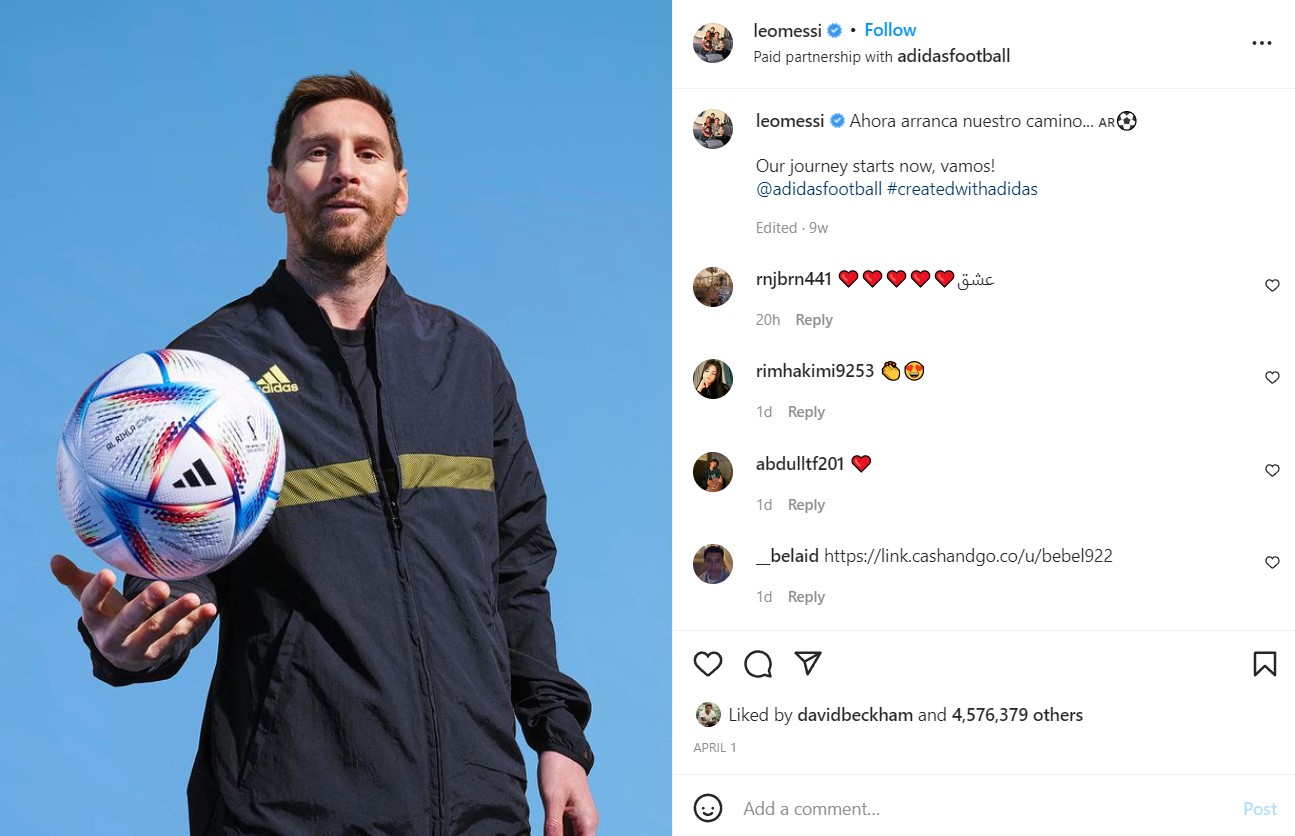
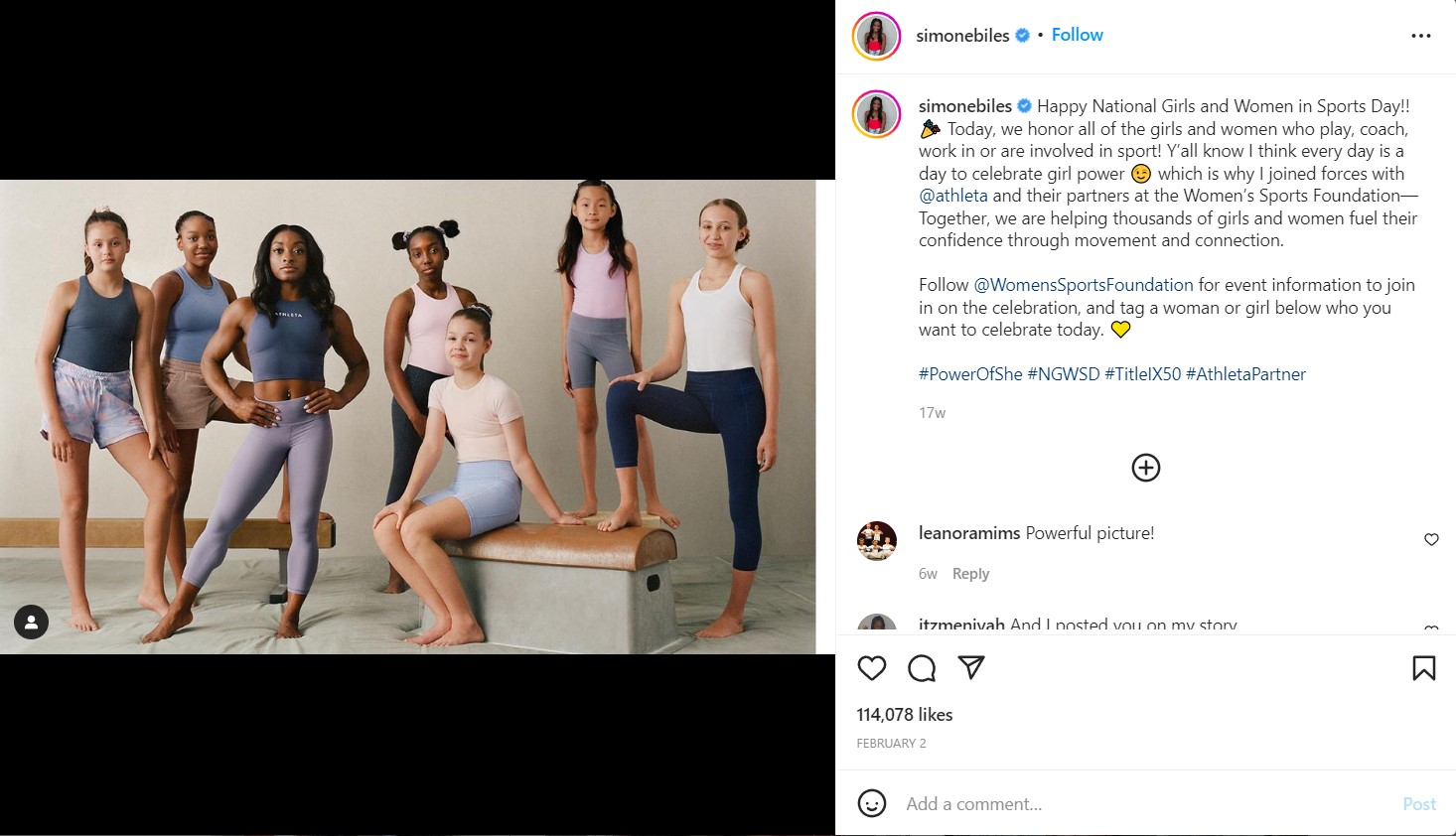
Gathering millions of followers is indubitably not an easy task. The good news is that you may not even need to have that many followers. If you are an excellent sportsman and play your cards right, you will also be able to get endorsements.
Take a look at Joe Walters, for example. The professional lacrosse player has under 40k followers on the platform, but that hasn’t stopped him from promoting other brands and posting sponsored posts.
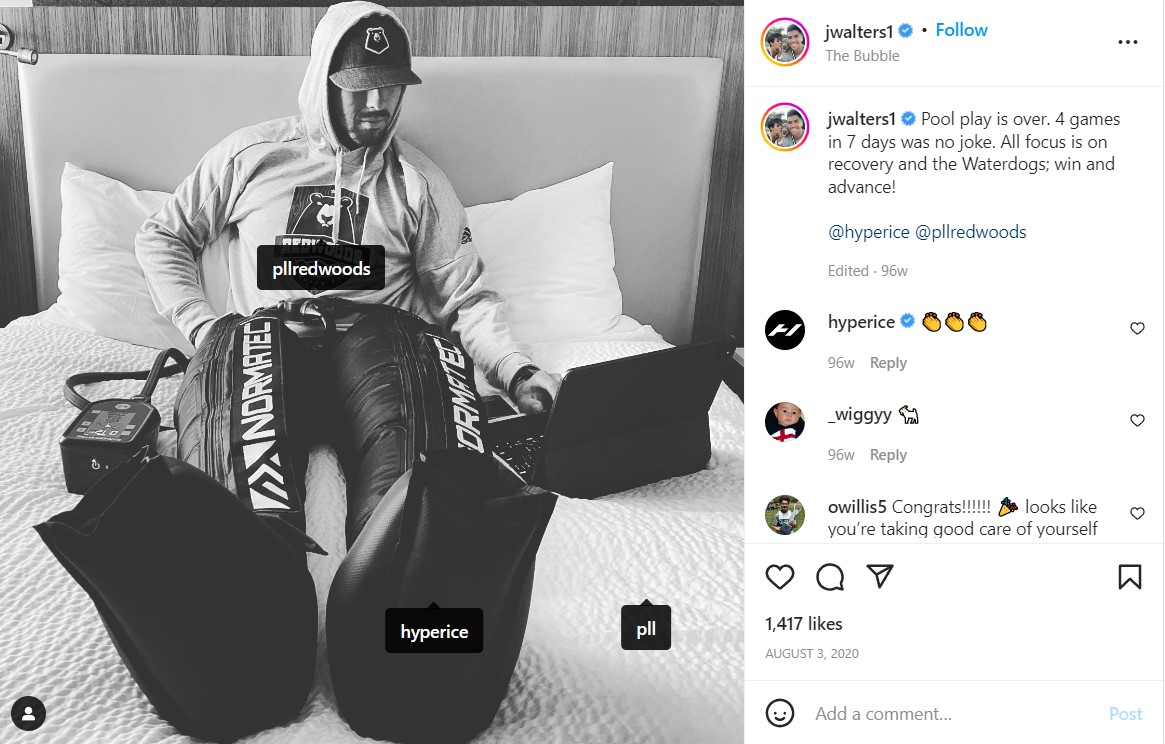
If there’s only one social media platform you have to point your attention to, make sure it’s Instagram. The platform offers endless opportunities to grow and cultivate your athlete branding. Don’t overlook them!
Athlete Branding on Facebook
Even though Facebook and Instagram are both owned by Meta – and often, what athletes post on one of the platforms, they also share on the other – both platforms have different audiences.
If Instagram is a breath of fresh air and a way to reach millions of people from the younger generation, Facebook is mainly preferred by older people. There are some exceptions here and there, but generally, Facebook is not the hit platform it once was.
However, depending on your specific sport, you may find that Facebook is the top choice platform for your branding, and that is great. Athletes usually have fans from different age groups, so they should be active on all channels those age groups prefer.
Cristiano Ronaldo takes first place as the athlete with the most liked Facebook page. His team is resharing his Instagram content on Facebook to reach an even broader audience.
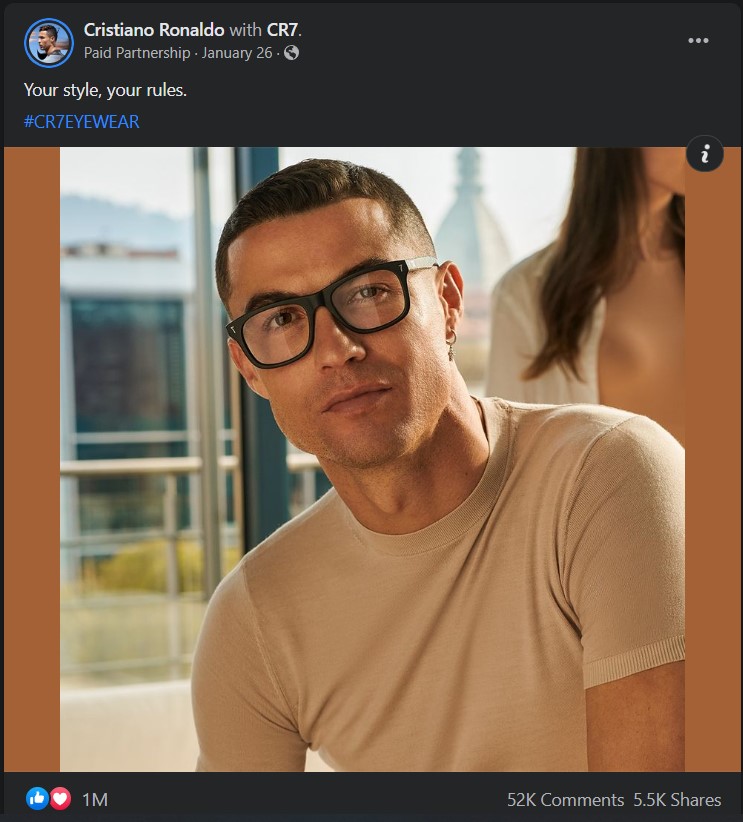
At the beginning of their brand development, some athletes use Facebook to create groups where they can communicate freely with their fans and followers. They share photos, opinions, and tips and reply to questions and comments. However, as good as this idea may sound, it won’t be long until you no longer have the time to manage the group by yourself. Furthermore, while successful in the past, this method may not drive the best results for your brand today.
Athlete Branding on YouTube
We get it. Being a YouTuber takes time you may not have. But trust us, you need it. Video editing is time-consuming, but when you grow big enough, you may hire editors to do the job for you.
YouTube is a great alternative to share yourself, your experiences, opinions, inspirations, and ideas with the world. You want to inspire those who follow you, and YouTube gives you the freedom to do it.
A three-time NBA Champion, Stephen Curry is also a YouTube star. Starting with the idea to spread the word about himself even further, Curry currently has over 1,5 million subscribers on his channel.
The best thing about YouTube for athletes is that it allows you to reach people that are not sports fans or enthusiasts but might be interested in what you have to say and offer.
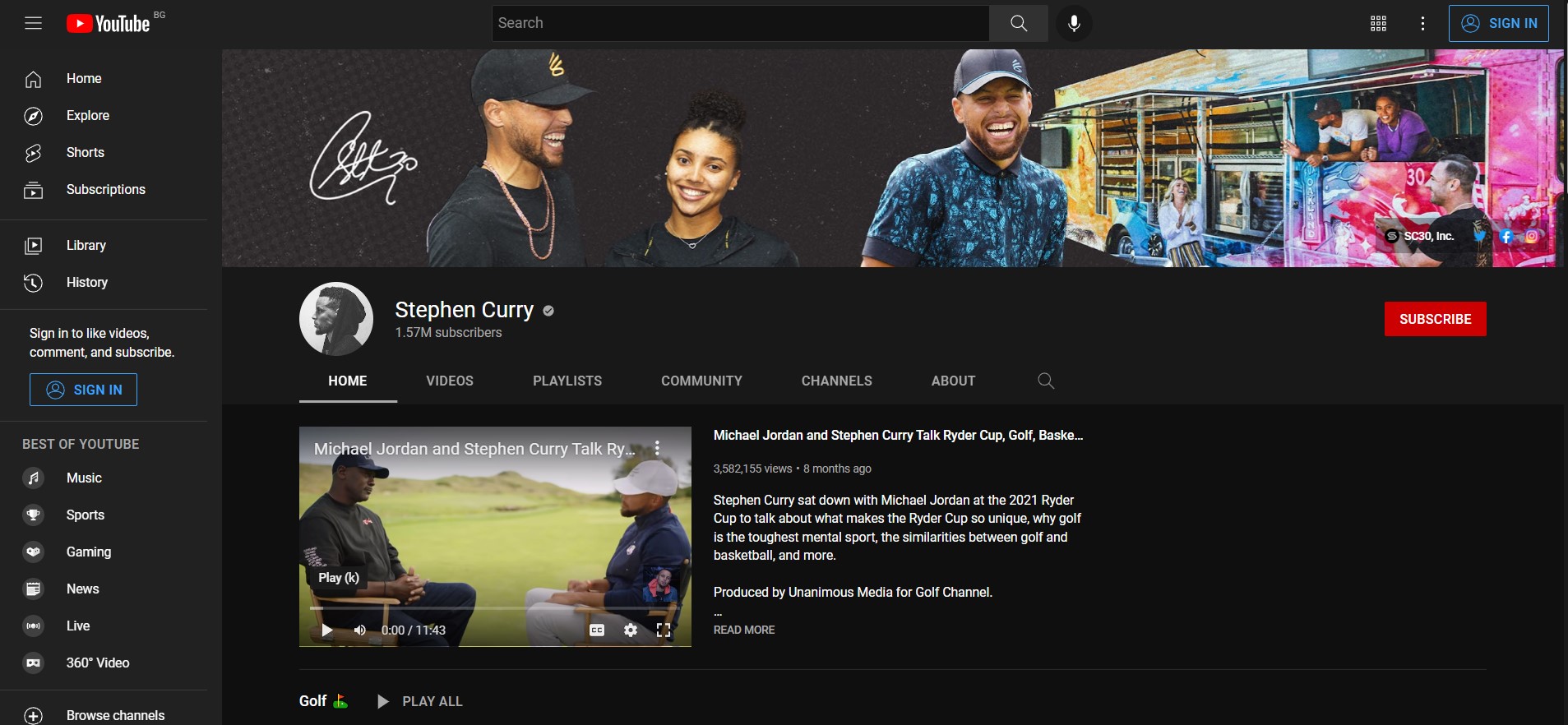
Athlete Branding on Tik Tok
It may be bold to state, but TikTok revolutionized the digital world. If you don’t know any better, you may think that TikTok is a silly app-only teenagers use to post lip-sync and dance videos.
Well, yes and no. Some people do use TikTok with those exact purposes in mind. But others who know what they are doing use the app to grow and leverage their athlete brands.
The app’s algorithm works in mysterious ways but is nevertheless the best option to reach millions of people worldwide.
TikTok allows you to show your funny, carefree side to the world. And people love seeing that behind the sheer determination and trained muscles, athletes are regular people. They sing, dance, have fun, and have entertaining interactions with other people or embarrassing stories to share. That’s the true power TikTok holds.
Even big stars like the 3-time Olympic Gold medalist Shaun White are now proud TikTokers. The snowboarder is active on TikTok and often uses his account to answer questions in his videos. White currently has 1.6 million followers and nearly 35 million likes on his videos, which we find impressive.
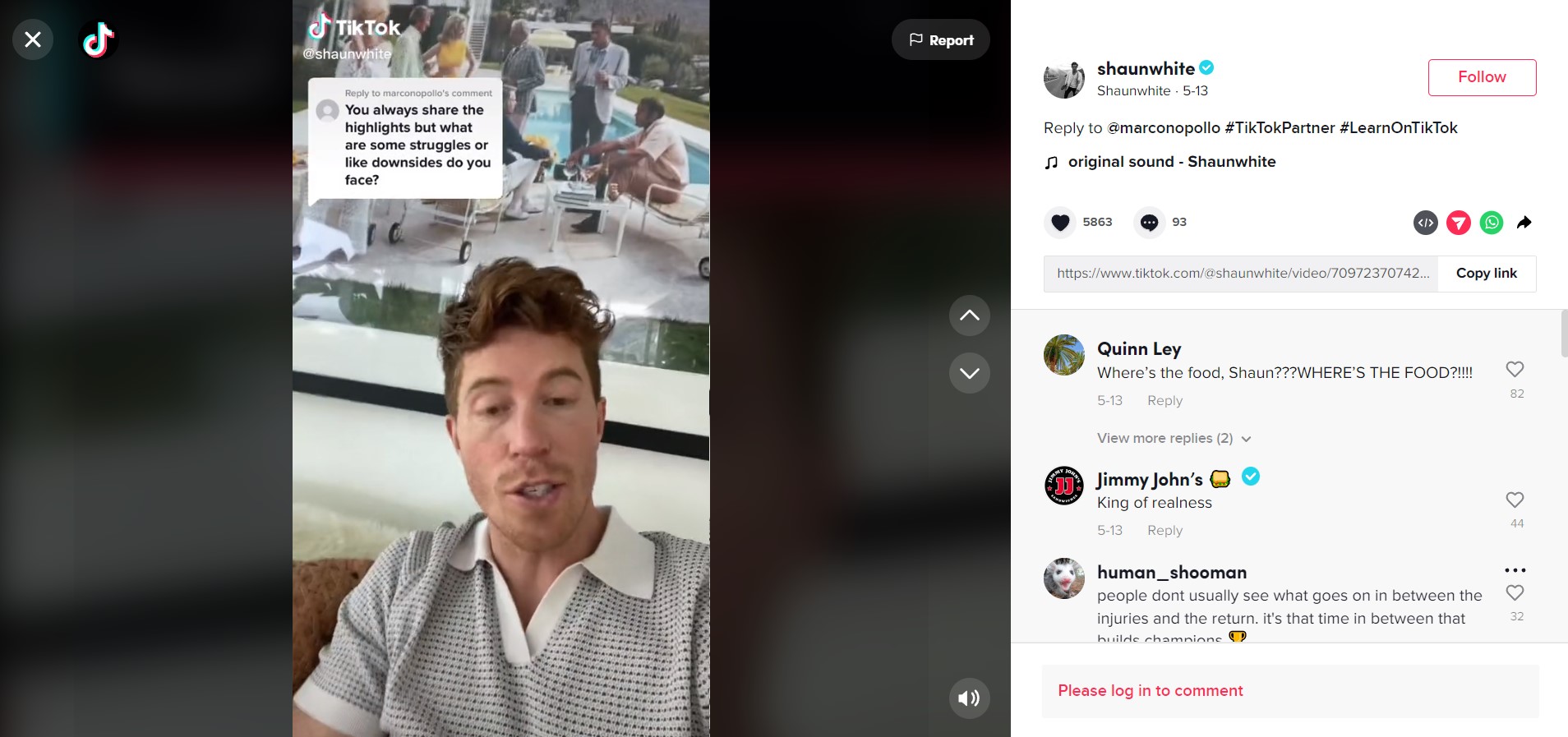
Athlete Branding on Twitter
The infamous character limitation for a post on Twitter is one of the media’s main benefits. When anything significant happens, Twitter is generally the go-to place for people seeking information, news, comments, and opinions.
If Instagram is more of a visual platform where photos and videos are a definite must, Twitter is all about using your voice and sending a message in less than 280 characters. Catching the Twitter wave is another way to boost your athlete brand.
Twitter creates the perfect environment to connect with your fan base and share essential details from your professional sports career. From expressing your thoughts on the game to posting any tweets and memes of any significant moments during the event that might boost your brand personality.
The key to winning over your Twitter audience is to be relatable. Don’t be afraid to speak your opinion on anything, not just sports. Any time you witness wrongdoings, take a stand and use your voice to change the status quo.
Once you’ve built a big enough following on Twitter, your audience will start interacting within themselves, keeping the conversations about you going for longer.
Another reason why Twitter is so popular among athletes is that sports brands love it. They use their Twitter accounts to announce the newest brand ambassadors or celebrate athletes and their accomplishments.
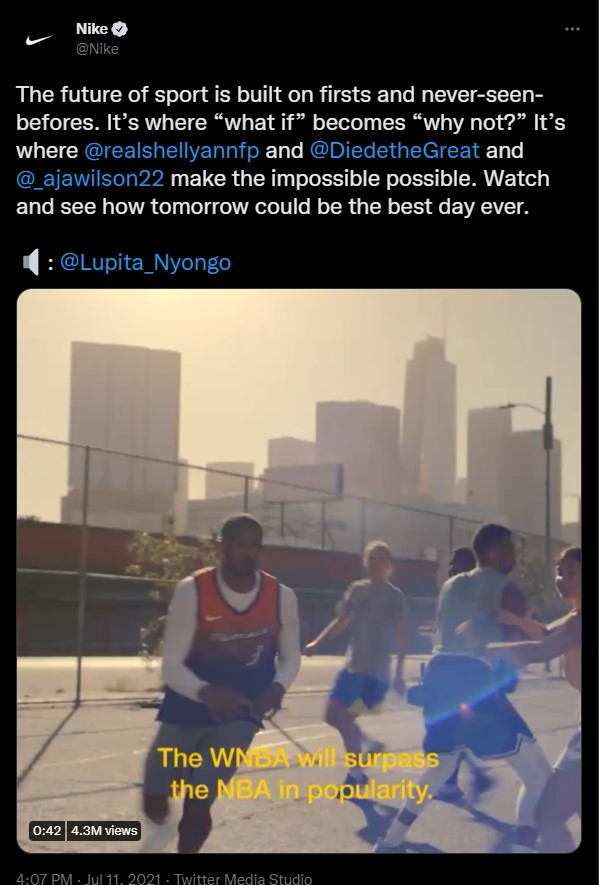
Athlete Branding on LinkedIn
LinkedIn is a strictly professional platform. Although in the past couple of years, people have started to freely post different types of content, it’s not the best place for athletes to grow and thrive.
If interested, you may present yourself to the business world of LinkedIn but it is not the place where you can market yourself.
Athlete Branding on Snapchat
Snapchat may not be as popular as it once was, but it is still relevant and living up to the expectations of today’s standards.
The reason you might want to be active on this platform gravitates yet again towards sponsorships and endorsements. To be successful in the media, keep in mind that Snapchat’s audience consists of teens and young adults between the ages of 13 and 24, meaning your snaps and sponsorships should be relevant to that age group.
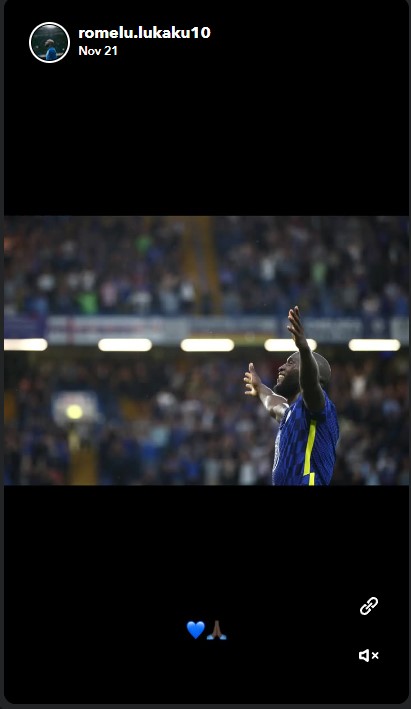
Among the pro athletes with Snapchat accounts are Lewis Hamilton, Romelu Lukaku, Serena Williams, Neymar, and Mario Goetze.
Success Stories: Famous Athletes with Brands
Are you still looking for reasons to stop postponing the work you should do to grow your athlete branding? Reading about other people’s success stories can be an endless source of inspiration. Thus, we’ve gathered the stories of six pro athletes that have managed to grow their revenues with their brands and have presented them below to inspire you.
Michael Jordan
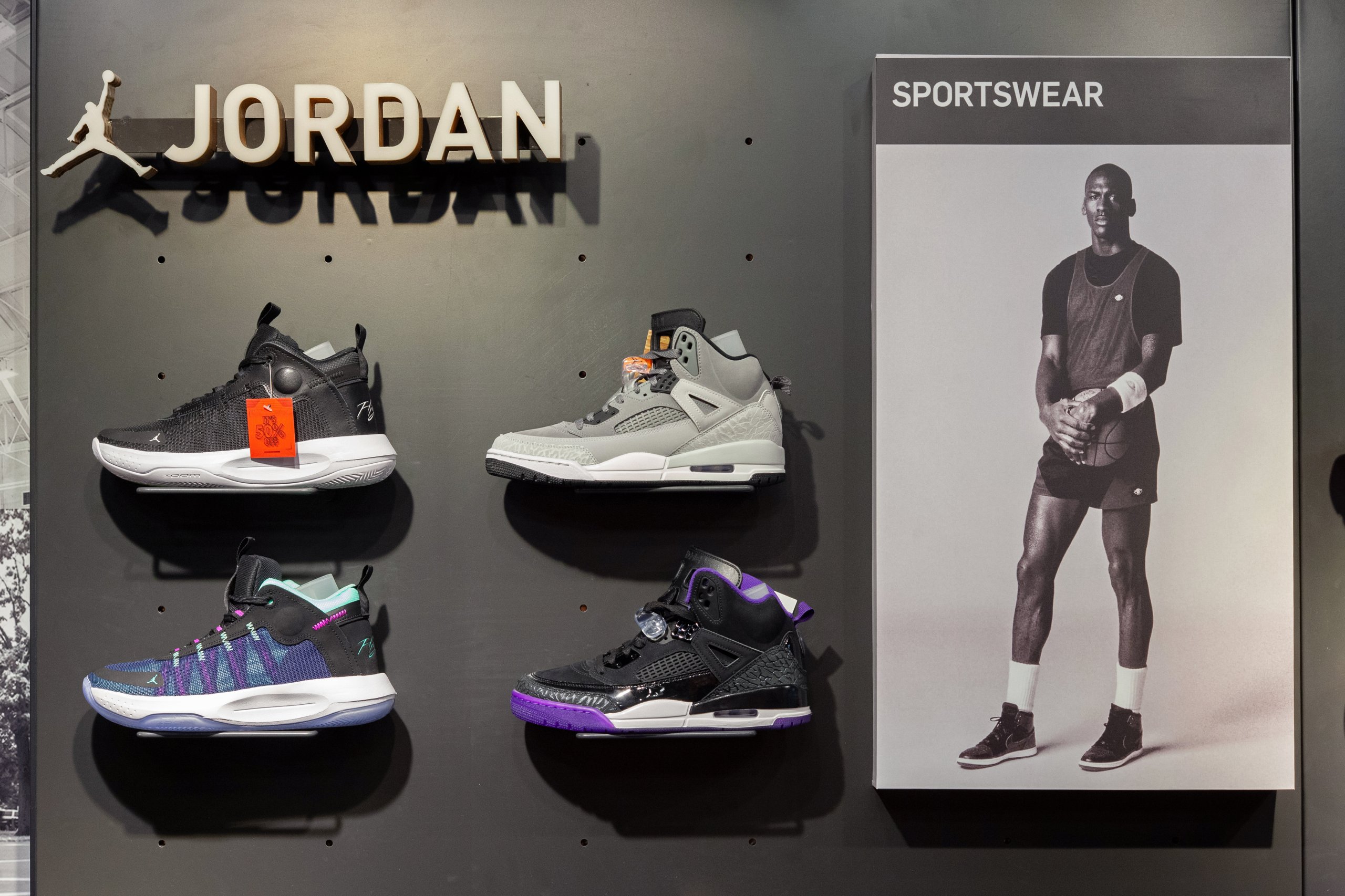
Starting with our most prominent example – Michael Jordan. Albeit Jordan retired nearly 20 years ago, he is still relevant and continues to make millions out of his brand. Everyone has heard of the legend’s shoe line Air Jordans, launched back in 1985 as a collaboration with Nike. And this turned out to be a success no one expected, not even Nike or the athlete himself.
According to David Falk, Jordan’s then-agent, the sports brand expected to sell $3 million by the end of the fourth year since the launch of Air Jordans but rather than that sold $126 million in the first year.
Currently, Nike’s Air Jordans are the best-selling sneakers ever. And the reasons for this enormous success are pretty self-explanatory. The athlete cultivated a strong presence even before social media was such a big part of our lives. Not only is he a good sportsman, but he is also a good person who engages with his fans, regularly showing them his appreciation.
Cristiano Ronaldo
Another big name with a captivating brand story is Cristiano Ronaldo. The internationally famous football player is among the top ten most-followed people on Instagram globally, currently landing the second position with 451 million followers.
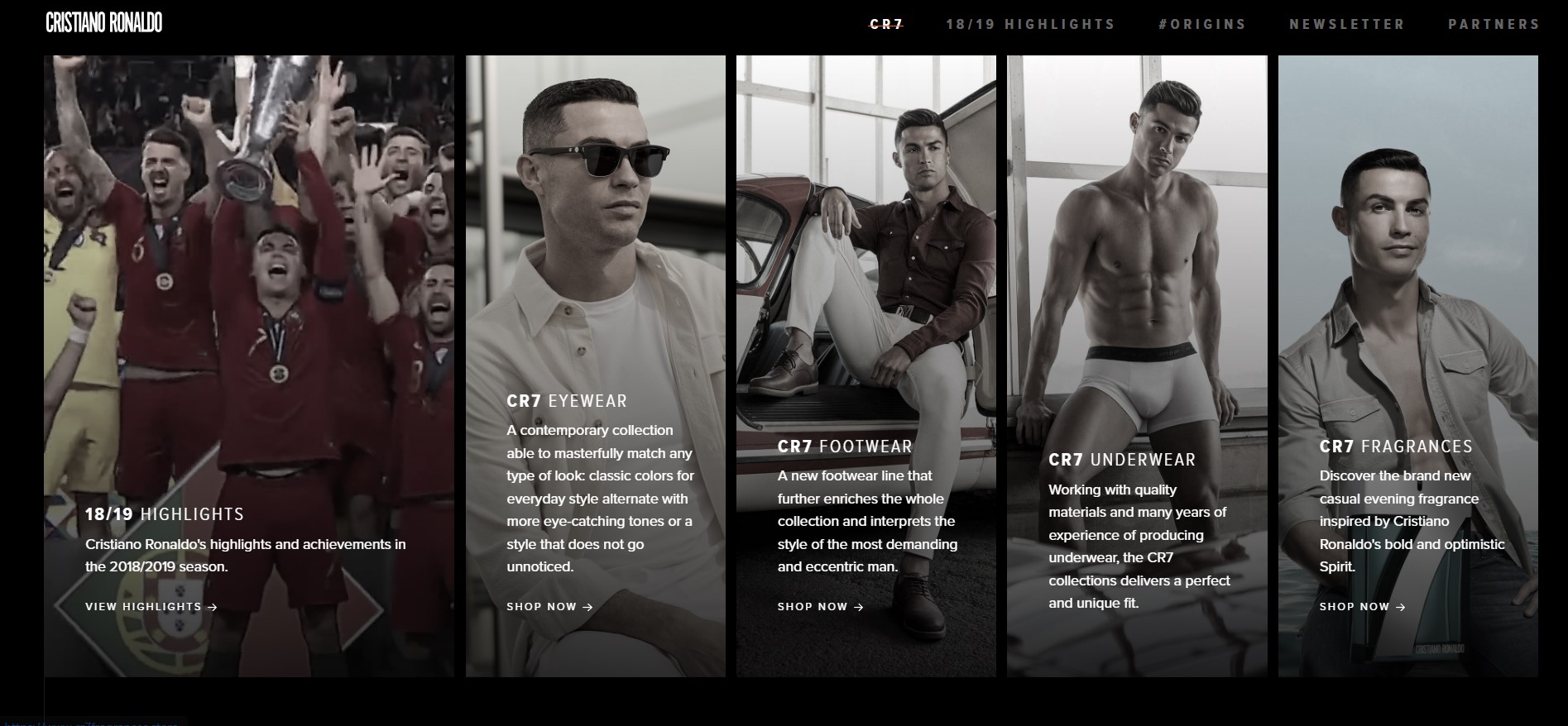
When he is not busy making millions on the field or promoting brands on his social media, Ronaldo is spending his days working on his own company – CR7. An abbreviation of his initials and the number he plays with on the field, the company offers a variety of brand products, including clothing, underwear, footwear, eyewear, and an impressive fragrance line.
Ronaldo is also actively donating money to various charities, which makes him compassionate in the eyes of his fans. His brand strategy is on point and will continue to add millions to his bank account.
David Beckham
Another retired sportsman people continue to look up to today is David Beckham. The English footballer may not be as followed as Ronaldo on Instagram but has managed to do some great things while cultivating his brand.
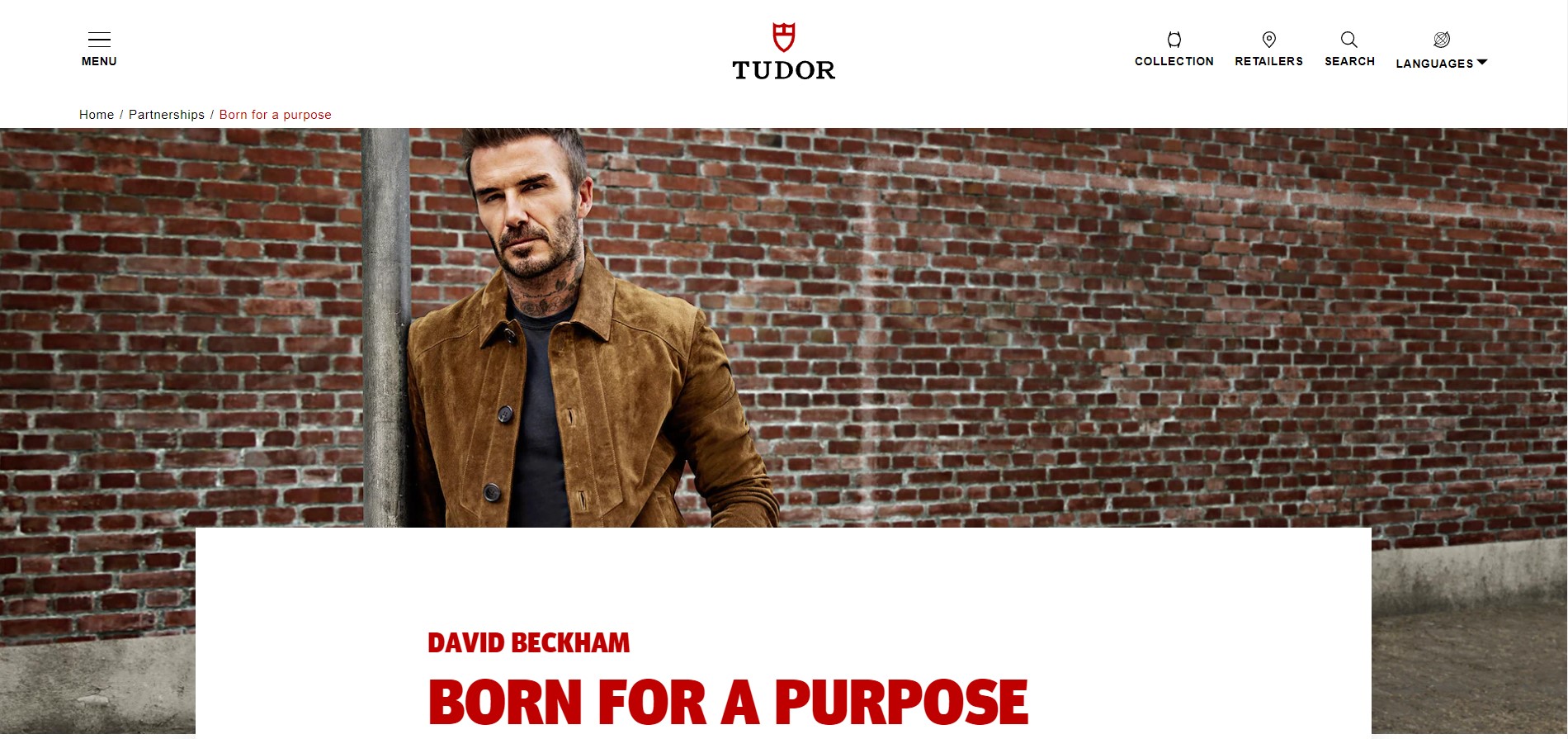
Beckham for Tudor Watches.
His good looks served him well and landed him lots of endorsements with different huge brands, including his 2007 promo campaign for Emporio Armani.
While the icon has been the face of many brands throughout the years (add Pepsi, Adidas, Gillette, and Jaguar to the list), in 2018, David Beckham also founded House99 with L’Oréal Luxe. The brand focuses on male grooming and self-care, offering shaving creams, beard and hair balms, body washes, and eye balms.
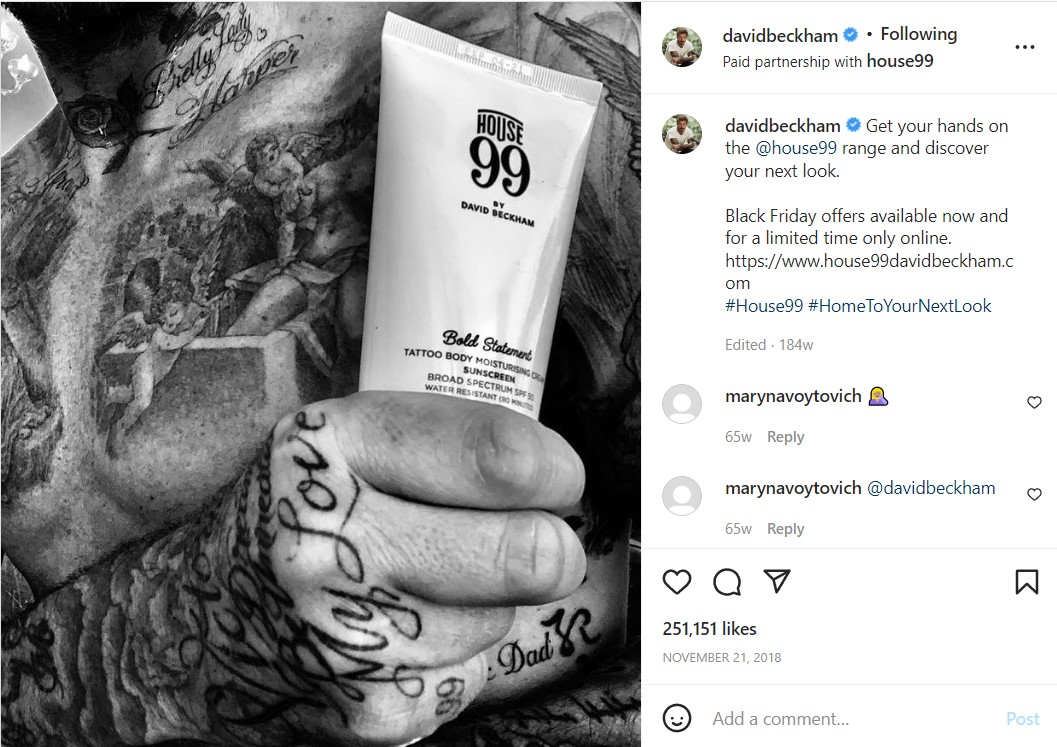
And if you think those are not enough, Beckham also has his successful fragrance line. Furthermore, the star makes no exception regarding donations to charitable organizations in Britain and across the world. Way to go!
Serena Williams
Time to show you some girl power! Winner of 23 Grand Slams and an international tennis superstar, Serena Williams is an example of an athlete branding done right.
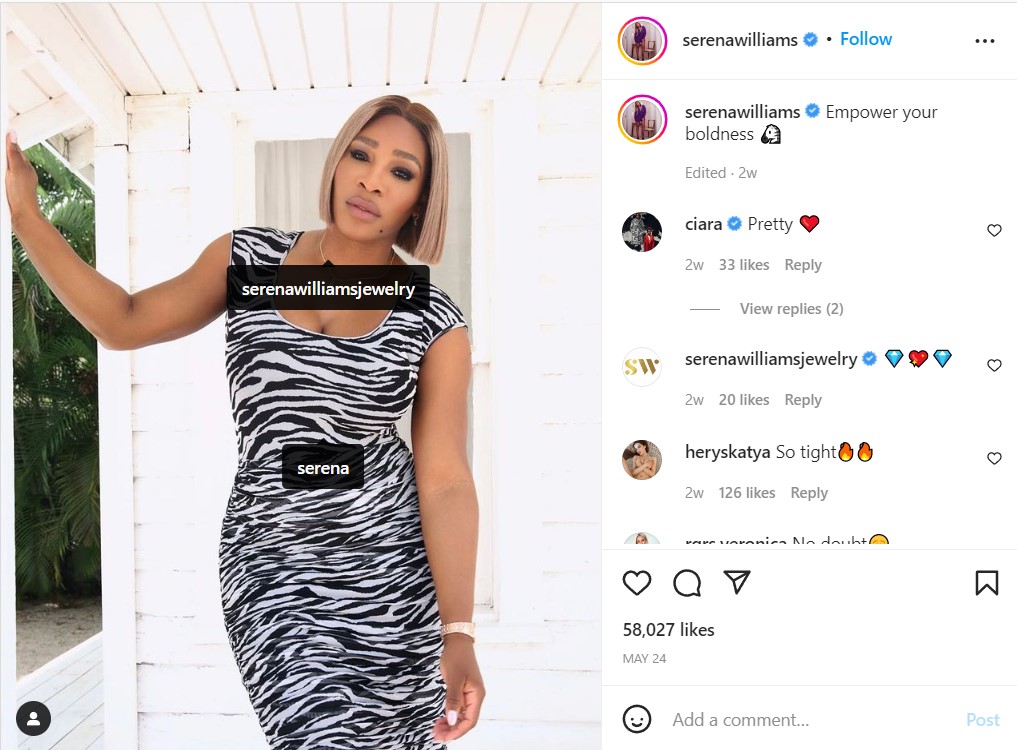
A woman of many talents, in 2018, Williams launched her fashion line S by Serena. Designed with the diversity of the female body in mind, her clothing line includes skirts, leggings, trousers, jackets, and even jewelry. The star is actively focusing on promoting her brand on social media and her website. The dedication is so strong that the first thing you see on her website‘s home page is S by Serena.
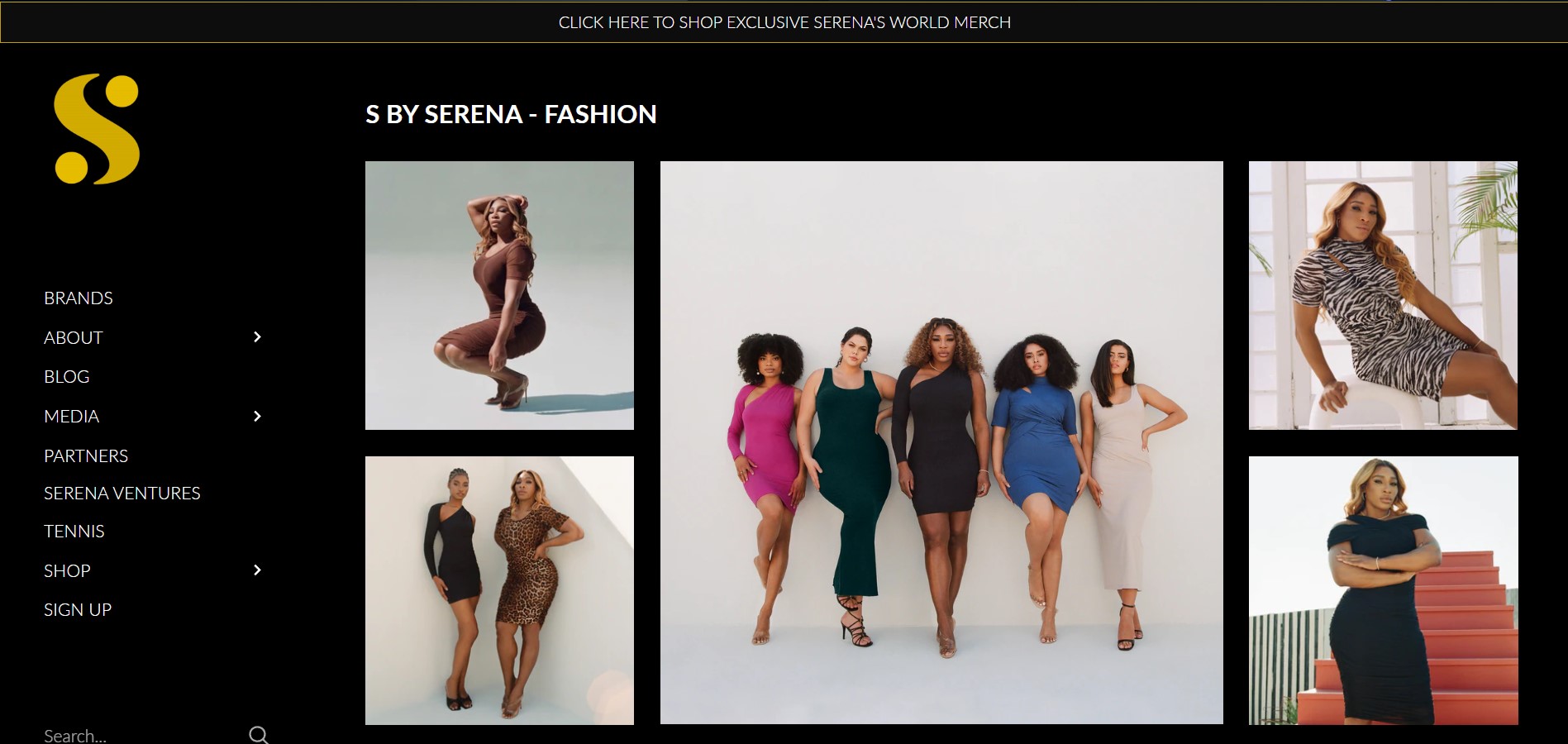
Apart from that, Serena has some impressive endorsements, including Nike, Pepsi, Beat by Dre, and IBM. And that’s not all! In 2009 Williams and her sister Venus became minority owners of the Miami Dolphins.
Maria Sharapova
Moving on to another tennis icon – Maria Sharapova. The tennis prodigy that surprised everyone in 2004 by defeating Serena Williams in the Wimbledon final has done quite good for herself regarding her athlete branding.
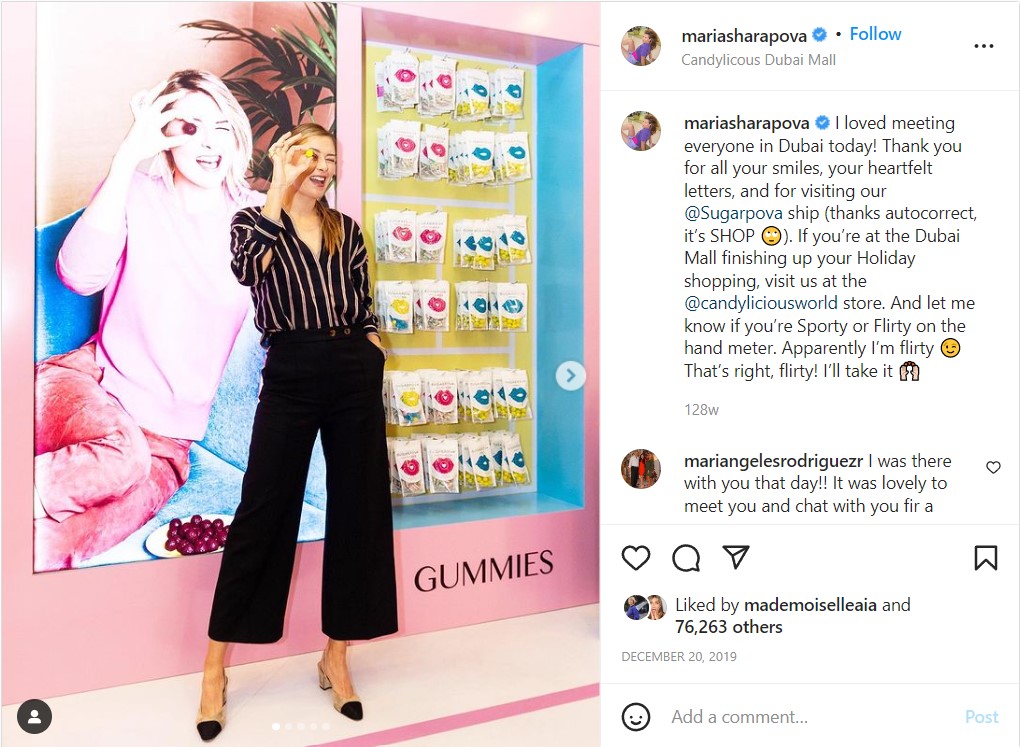
Sharapova seems to be a fan of all sorts of sweets as in 2012, after her career-threatening injury, she founded Sugarpova, a company that focuses on selling candies. The backstory of the company is adorable – Sharapova’s father rewarded her with candy after every long practice session.
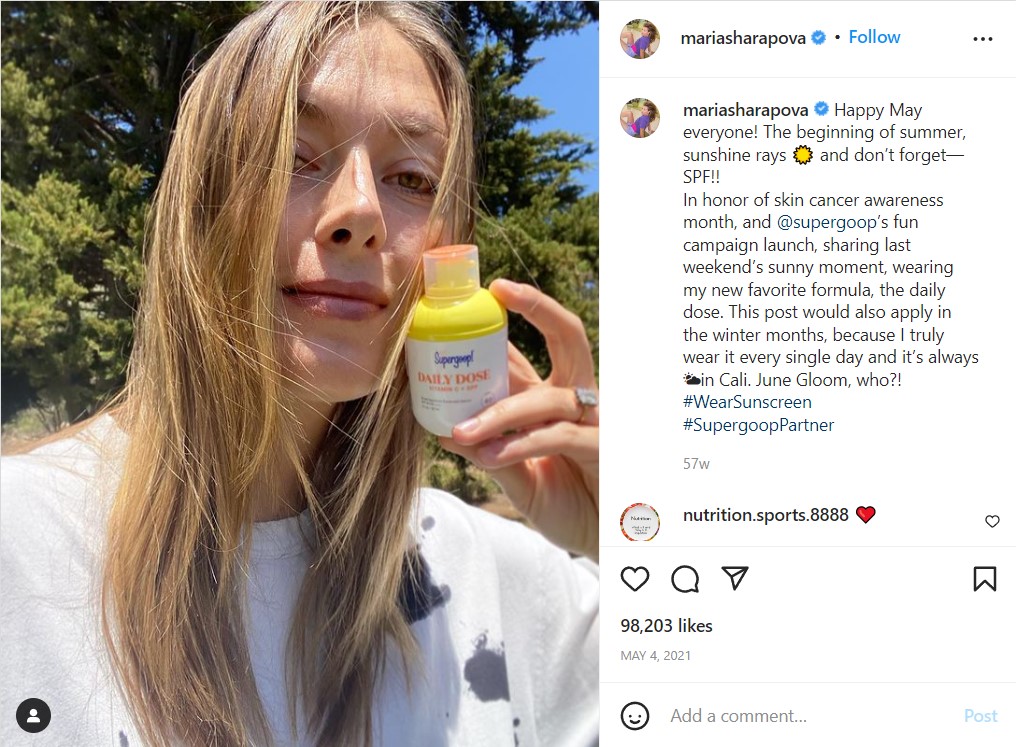
Later on, in 2014, the athlete became the co-owner of the UV-focused skincare company Supergoop, which delivers a wide range of sunscreen products for all skin types. Sharapova also has several endorsement deals, including Nike and Evian.
Dwayne ‘The Rock’ Johnson
Not only is Dwayne ‘The Rock’ Johnson one of the highest-paid actors worldwide, but he is also one of the best wrestling athletes in the world. And although he might have made the big bucks thanks to his flourishing acting career, Johnson started as an athlete.
With his 320 million followers on Instagram, it is not surprising that The Rock also made it to the top ten most-followed people on the list. Today Johnson continues to make millions on his social media platforms, promoting different brands.
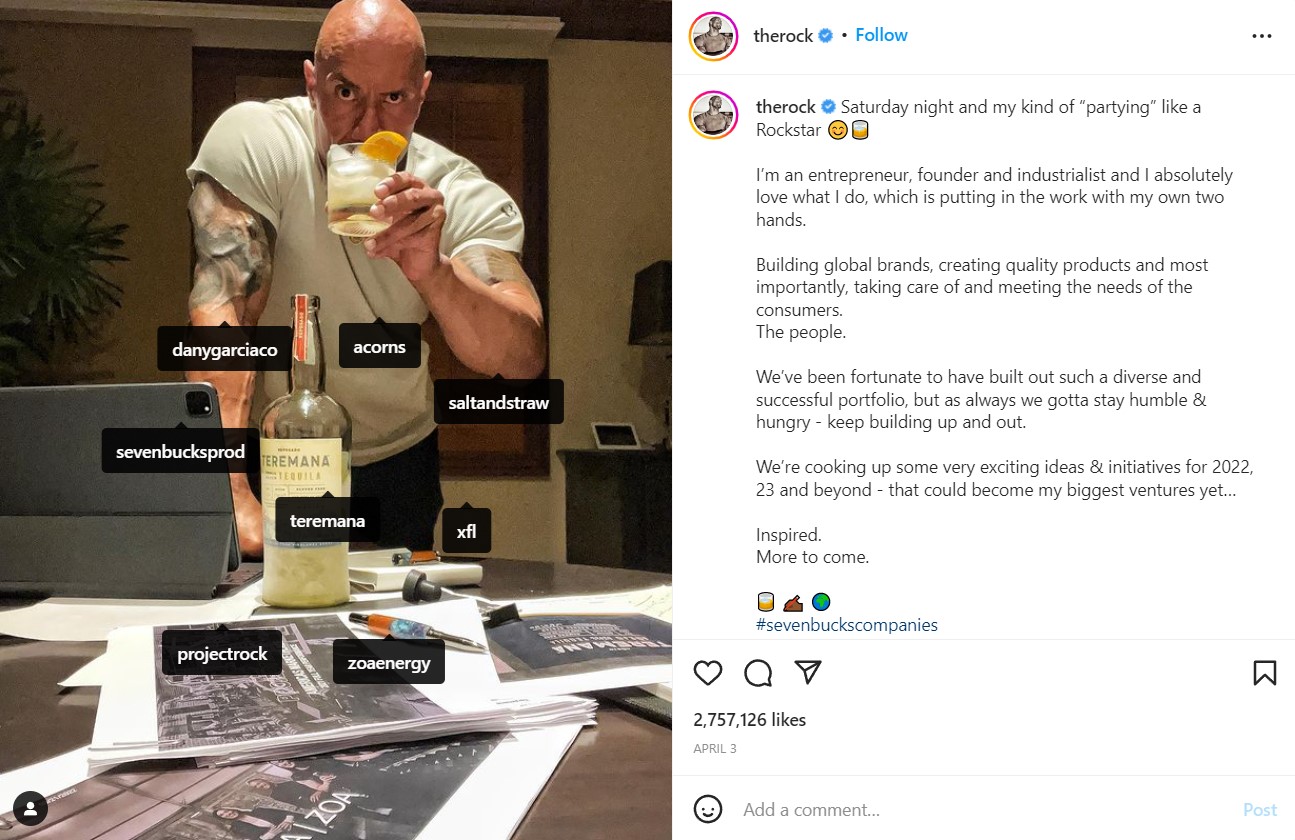
Apart from those, the Rock has several personal projects generating even more revenue for his bank account. Collaborating with Under Armour, in 2017, Johnson launched Project Rock – a brand focusing on footwear and apparel for all people who are not afraid to work hard to become better.
Just at the beginning of the pandemic, The Rock also launched Teremana – a tequila company that aims to bring people together. And if you are not into alcoholic beverages, you may want to look up ZOA – the Rock’s newest brand for energy drinks.
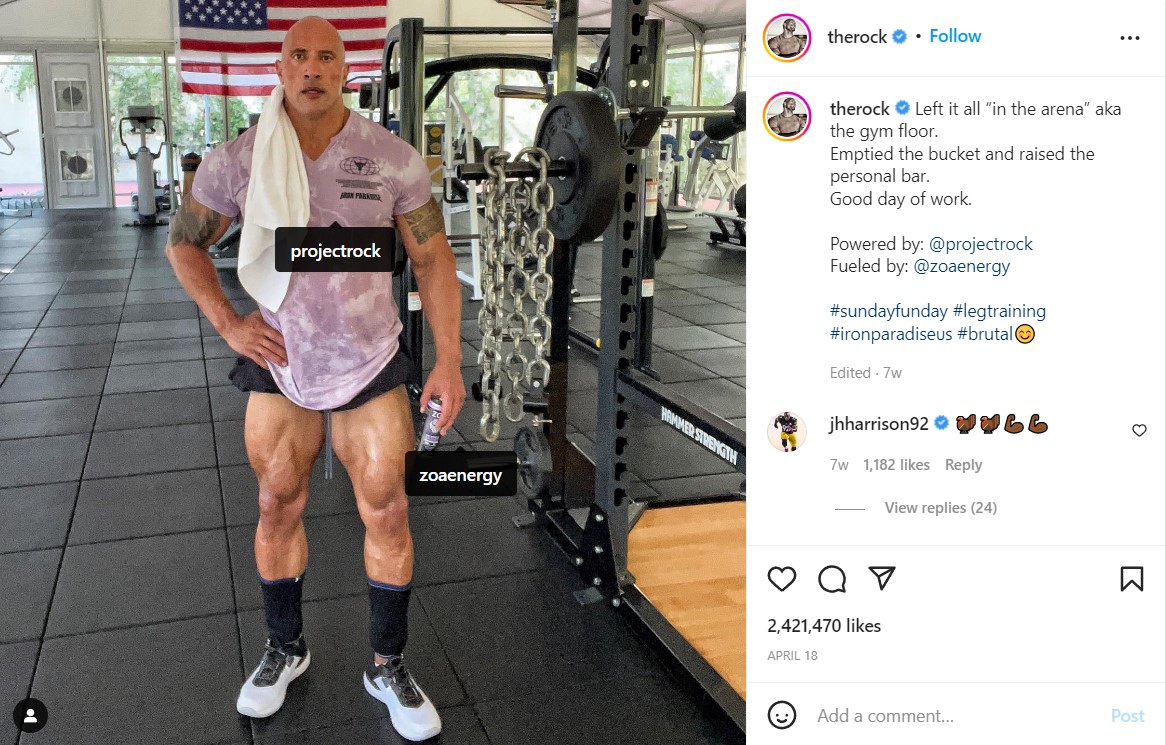
The rock
And don’t even forget that The Rock now owns XFL. And while his acting career was a massive boost for Johnson’s current endeavors, a big part of his success is owed to his personal branding.
How Do Athlete Branding Agencies Work?

An athlete branding agency helps you on your way to establishing your name in the world of digital marketing and gathering an audience that will stand behind your back no matter the hardships you may face in your career.
While every athlete is different and has unique selling points, the process of creating a successful strategy is the same and goes through the following steps:
-
Consultation
Nothing can be achieved without an initial consultation. It may take one or several meetings, but the consultation process is crucial for the final result.
That is when you will meet with your potential marketing experts. Make sure you articulate your goals and everything you want your brand to represent. Don’t miss any detail that makes you unique from your competitors.
To gain the confidence that you’ve chosen the right experts for the job, don’t be afraid to ask questions or request to look at case studies. Be invested in the process and do as much research on the agency as they would do on you.
-
Research and Brainstorming
Once you’ve agreed to work with the agency and the experts have gathered all the needed information from you, they will start their research process. They will look at what your competitors are doing, what practices work best in your field, what your target audience wants to see, etc. This process is essential and will give them insight into the strategy they need to create for you.
-
Strategy and Execution
Completing the first two stages will allow them to get to the most important one – execution. Whenever the strategy is ready, the experts will present it to you. That’s when you can make comments, express your concerns or discuss any potential changes. Once this process is finalized, the marketing experts will start working on achieving your marketing goals.
-
Results
While your strategy will most likely be regularly further developed, optimized, and updated, you will start noticing the fruits of what your experts have reaped.
Do you Need an Athlete Branding Agency?

So many elements go into a good marketing strategy and even more so in understanding how to deliver a successful partnership campaign with your potential sponsors.
Furthermore, considering that, as an aspiring athlete, you spend most of your time training, practicing, and competing, you won’t have the time to tackle everything by yourself.
It may get overwhelming.
For everyone.
And to add more to the equation, even if you have someone on your team who handles the marketing part for you, they may not have expertise in every aspect that we’ve discussed thus far.
Marketing or athlete branding agencies have people for everything who have the knowledge and expertise to execute your strategy and skyrocket you to the stars.
It may not seem like a lot of work, especially if you are just starting, but trust us on this, it is. Don’t overwork the people in your team who may not even be doing the right things despite their best efforts. Trust the professionals and collaborate with experts that can make your athlete brand flourish.
Will Athlete Personal Branding Continue to be Important?
The short answer is “Yes.” The long one – “Depends.”
Athlete branding will indubitably continue to be a force to be reckoned with. And those who comply with the rules will experience all the benefits that come with it.
However, not every athlete establishes a brand personality people want to follow. Many fail and will continue to do so, especially if they don’t follow the steps for building a successful brand.
It is still uncertain how the digital world will change and what new ways of communication will emerge. Regardless of the possibilities, those who can adapt will thrive. Those who can’t, will most likely perish.
Wrapping Up

Fans are the ultimate way to prove you’ve done your job as an athlete and, more importantly, as a person right. So the remaining question is how to get all those people that follow you and turn them into a loyal audience?
In this guide, we gave you the answer. Many aspects and practices go into a brand cultivation strategy, but nothing beats honesty, authenticity, and relatability. Don’t be afraid to give them a try!


